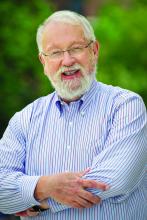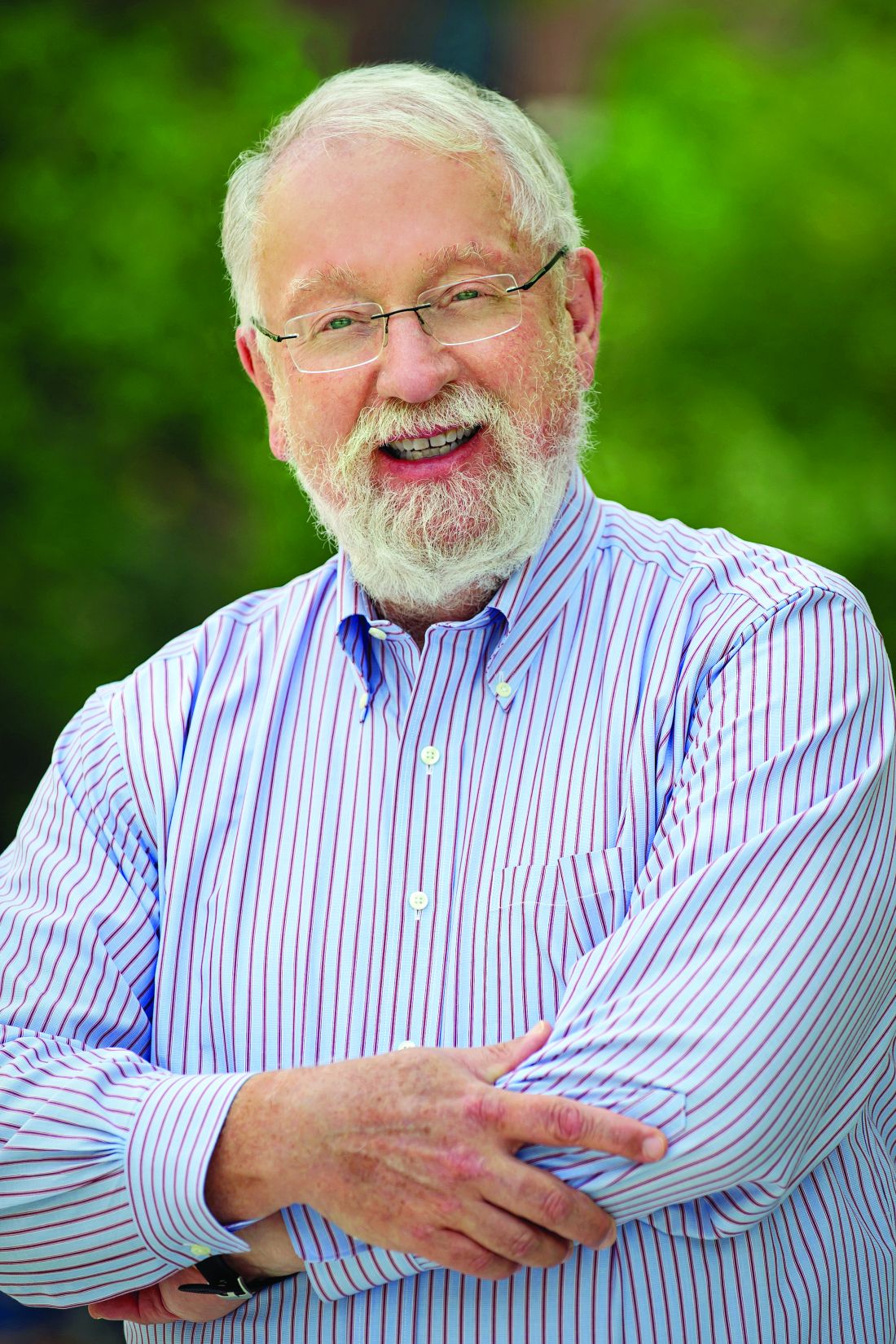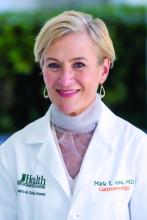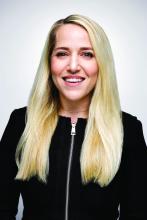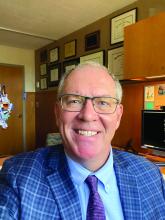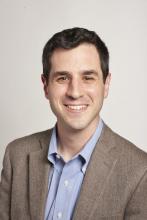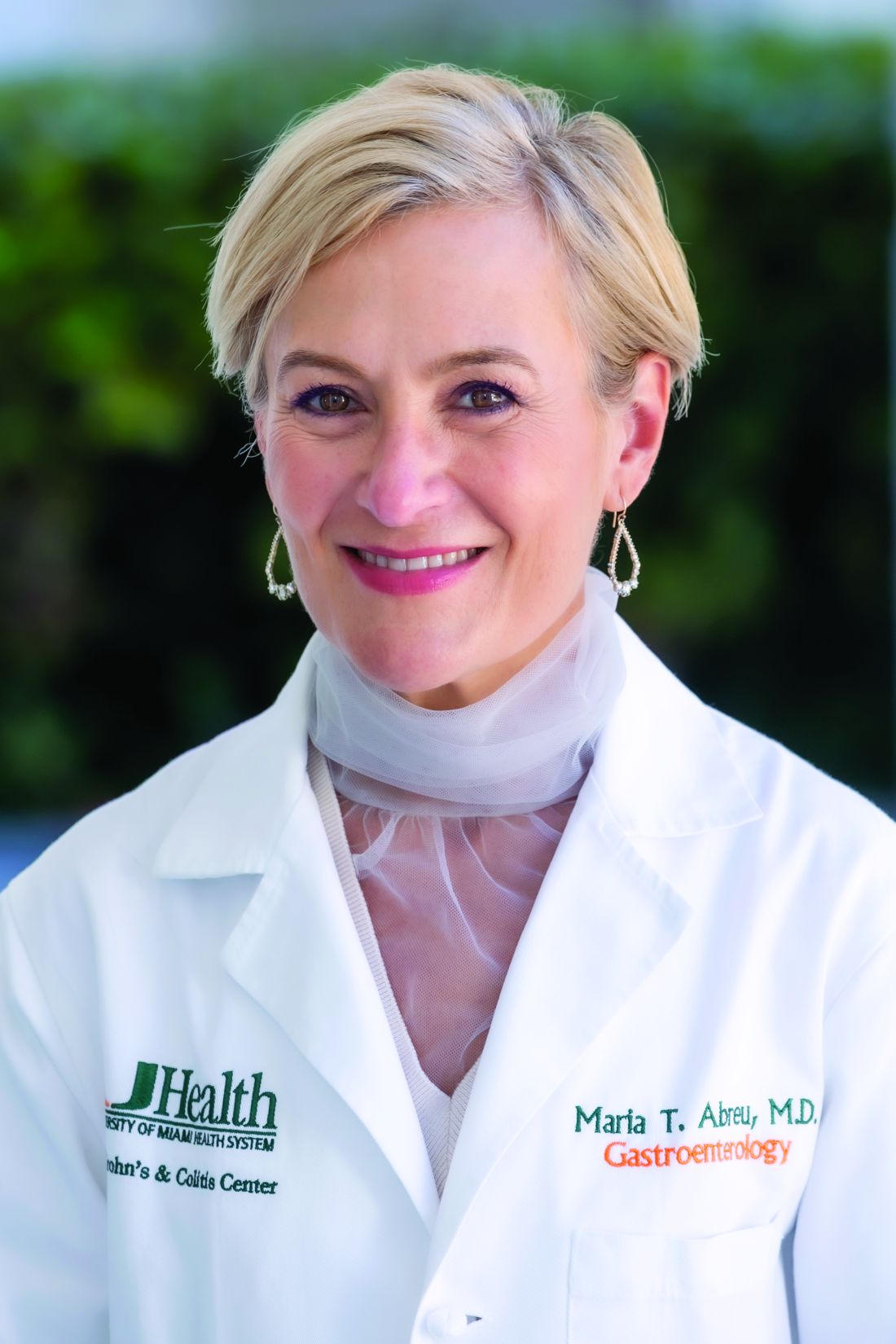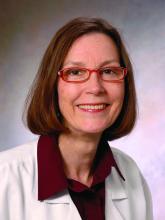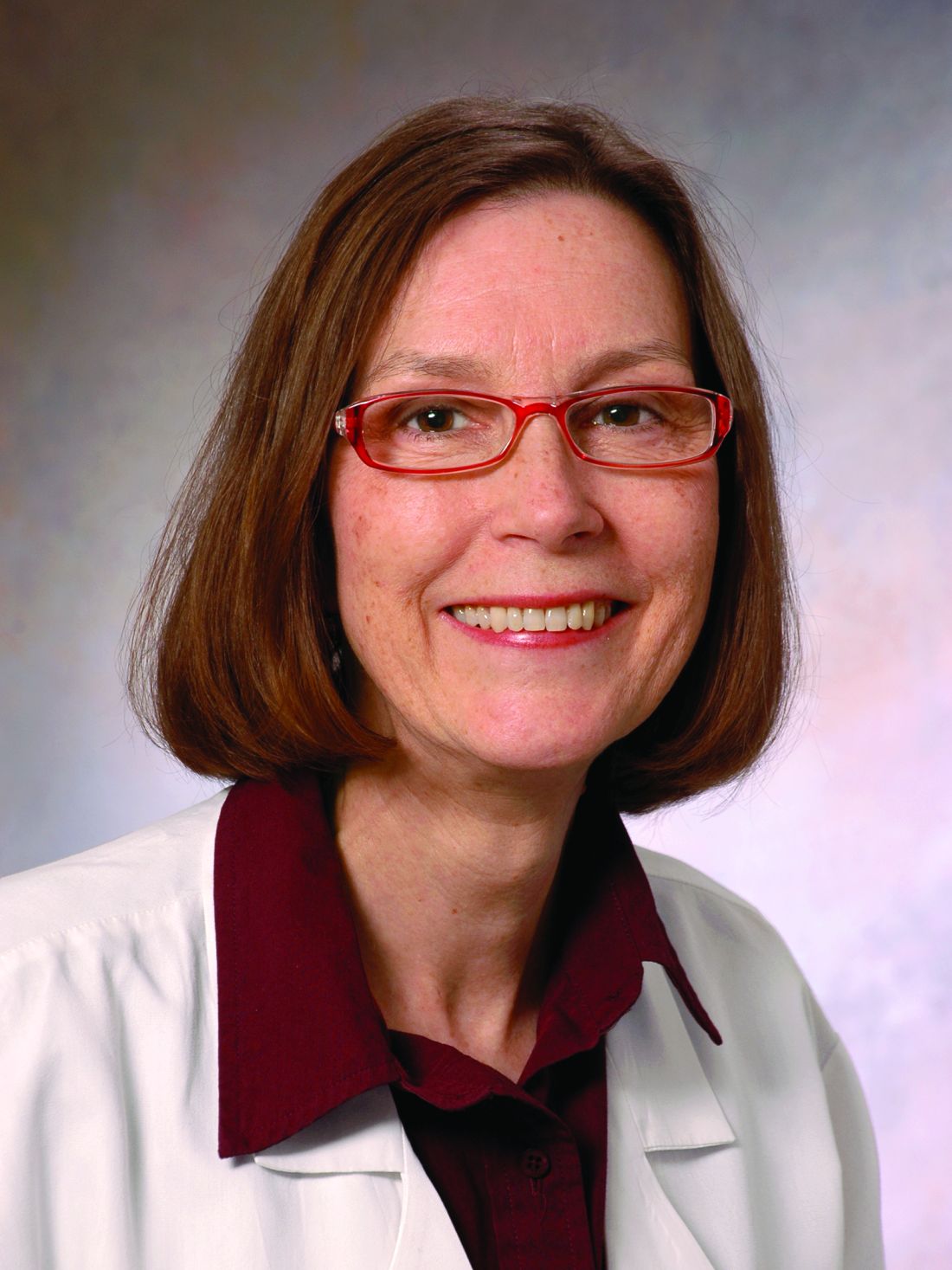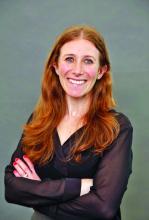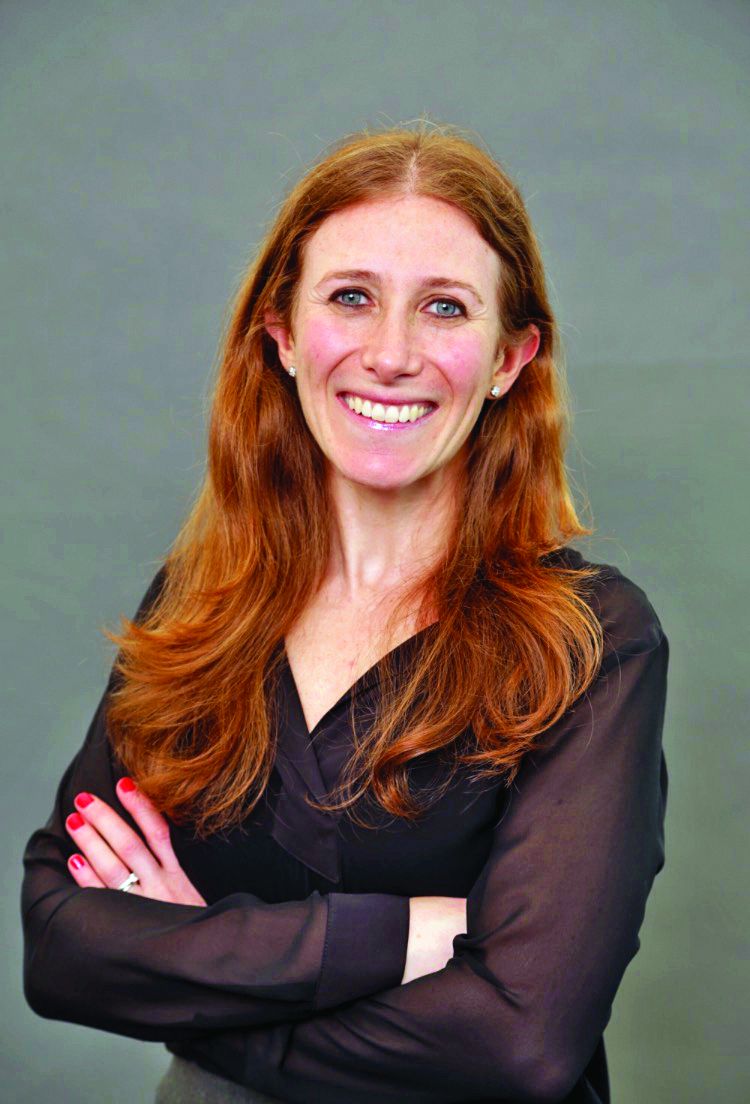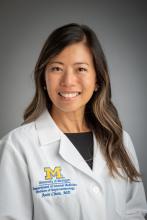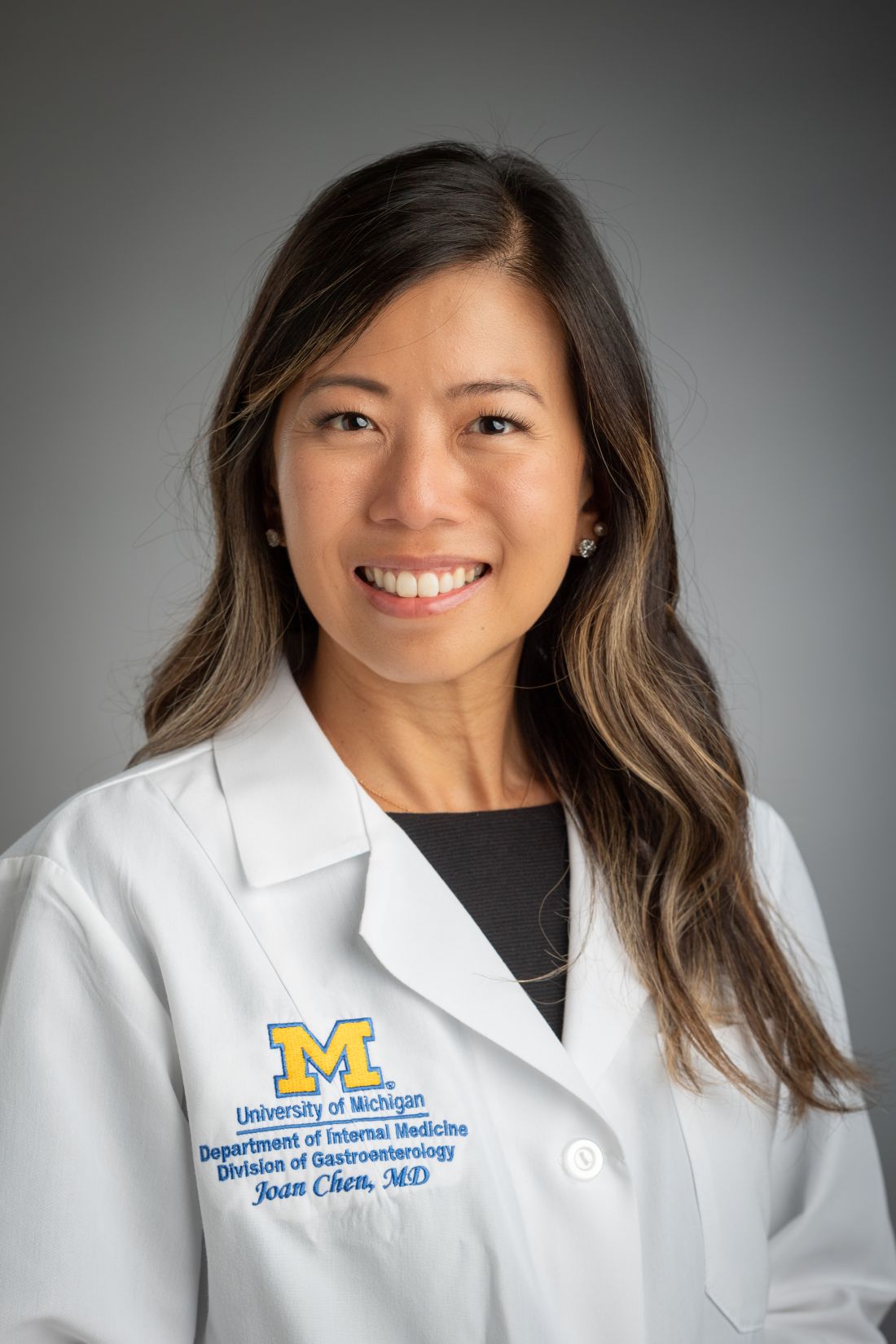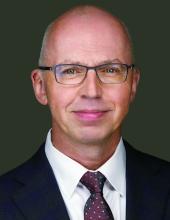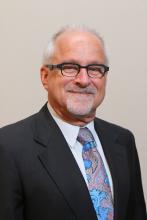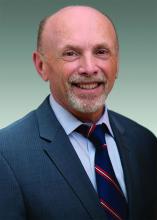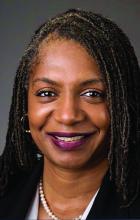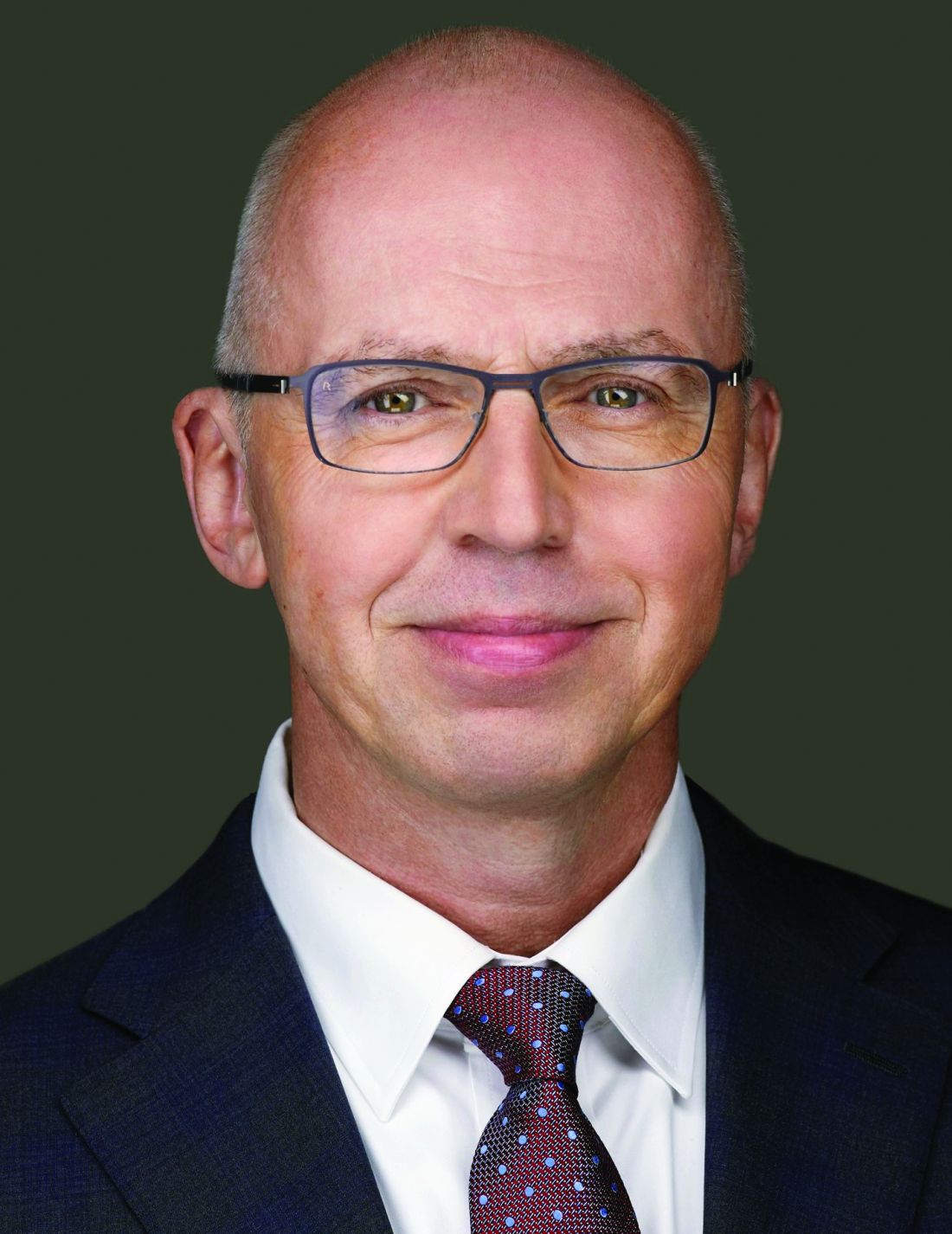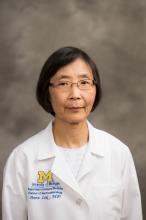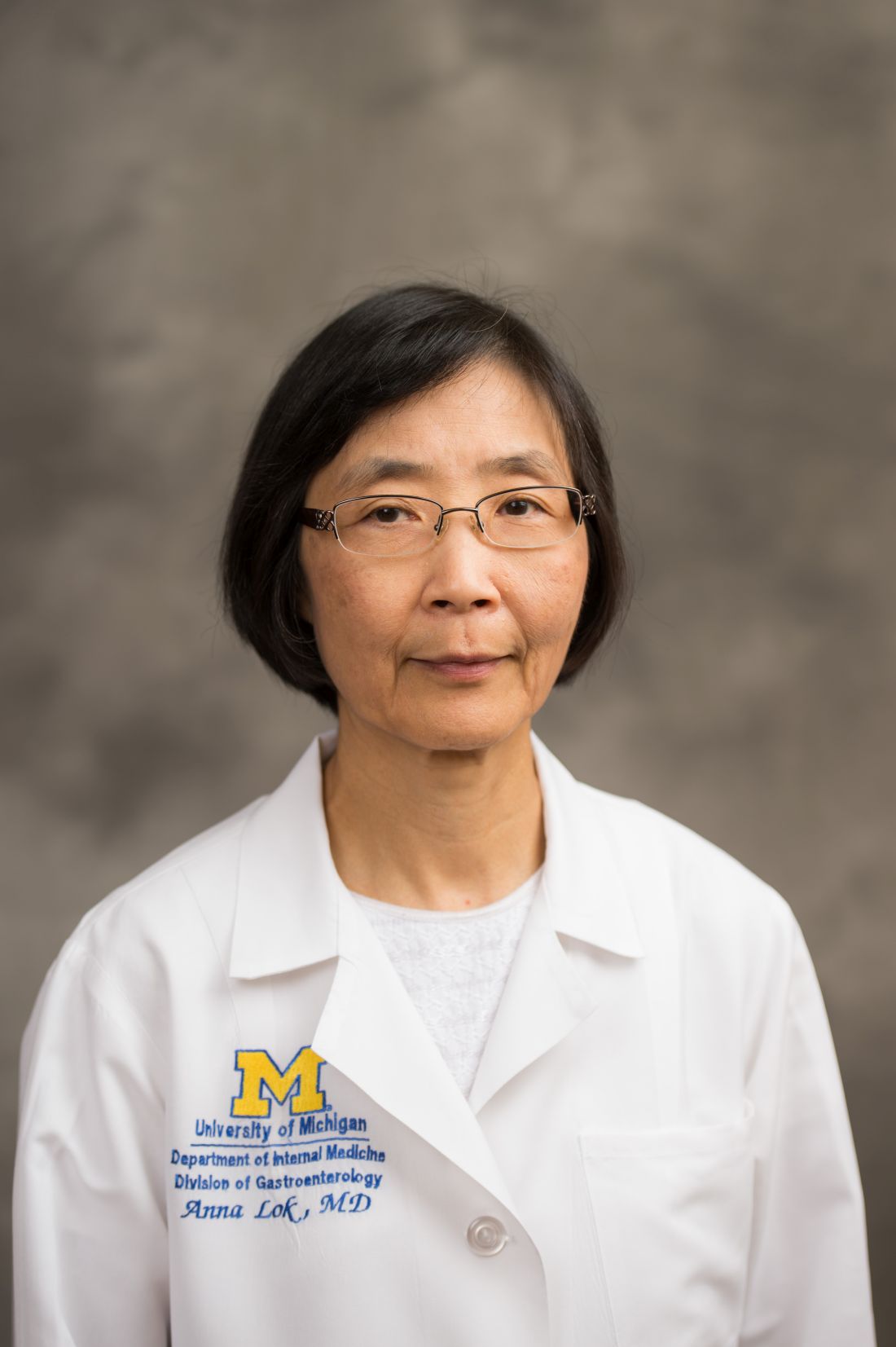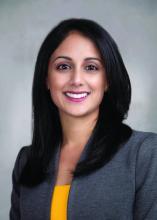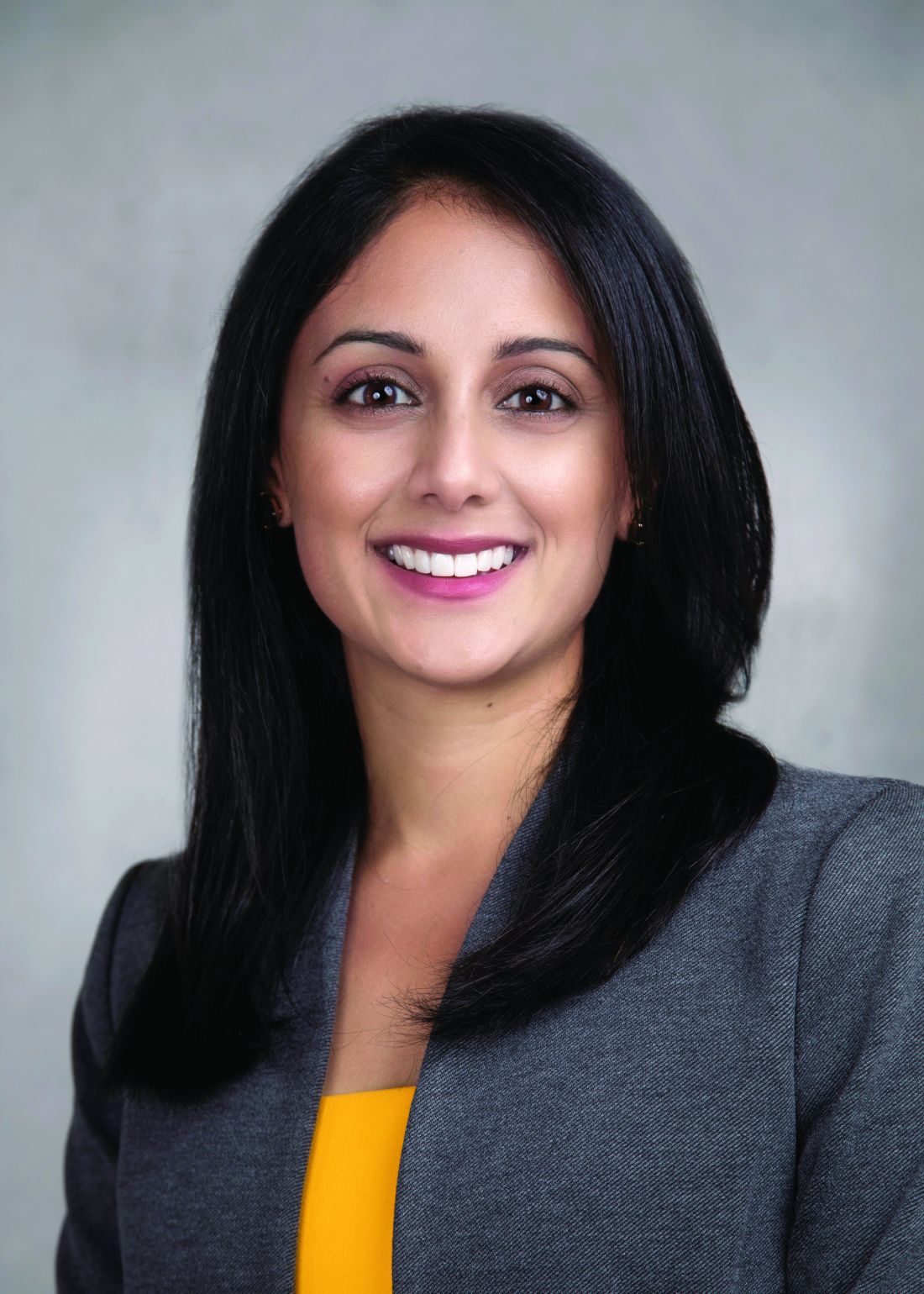User login
Two historical events that changed the field of gastroenterology
The first event took place in 1822 at Fort Mackinac, which today is known as Mackinac Island on northern Lake Huron in Michigan. Alexis St. Martin, a French-Canadian fur trapper, was standing outside of the general store when a shotgun blast accidentally struck him in the stomach. Ordinarily, this would have been a fatal wound, but St. Martin miraculously survived--but with a gastric fistula that permanently exposed the interior of his stomach.
William Beaumont, the post surgeon at Fort Mackinac, engaged in a series of experiments – purportedly 238 – to study human digestion. In one experiment, Dr. Beaumont would pull food in and out of the stomach to study digestion. In another, he would withdraw fluid from the stomach to observe digestion outside of the body. The experiments caused St. Martin considerable discomfort. He eventually returned to Canada, but returned later when the U.S. Army agreed to compensate him for some of his expenses. Today, the experiments would be called into question as having crossed ethical boundaries. Dr. Beaumont published the results from his experiments in a book that established the fundamental basics of our current beliefs about digestion. The experiments arguably mark the first example of gastrointestinal research in the United States.
The second historical event – the invention of the fiber-optic endoscope – also occurred in Michigan. At the University of Michigan, Basil Hirschowitz, MD, invented a flexible, fiber-optic instrument that could be used to look into the stomach, and perhaps even the duodenum. He first tried the invention on himself, and in 1957, he demonstrated it at the national meeting of the American Gastroscopic Society by reading a telephone directory through the new device.
The instrument was soon adopted for clinical use by physicians. Whether the fiber-optic machine was superior for visualizing the stomach was hotly debated, but what was very clear was that the fiber-optic tool was more comfortable for patients. By the mid-1960s, the fiber-optic invention had become the instrument of choice for gastrointestinal endoscopy. Many advances have since been made to the original instrument.
Dr. Howell is the Elizabeth Farrand Professor and a professor of internal medicine, history, and health management and policy at the University of Michigan, Ann Arbor. He has no financial disclosures.
The first event took place in 1822 at Fort Mackinac, which today is known as Mackinac Island on northern Lake Huron in Michigan. Alexis St. Martin, a French-Canadian fur trapper, was standing outside of the general store when a shotgun blast accidentally struck him in the stomach. Ordinarily, this would have been a fatal wound, but St. Martin miraculously survived--but with a gastric fistula that permanently exposed the interior of his stomach.
William Beaumont, the post surgeon at Fort Mackinac, engaged in a series of experiments – purportedly 238 – to study human digestion. In one experiment, Dr. Beaumont would pull food in and out of the stomach to study digestion. In another, he would withdraw fluid from the stomach to observe digestion outside of the body. The experiments caused St. Martin considerable discomfort. He eventually returned to Canada, but returned later when the U.S. Army agreed to compensate him for some of his expenses. Today, the experiments would be called into question as having crossed ethical boundaries. Dr. Beaumont published the results from his experiments in a book that established the fundamental basics of our current beliefs about digestion. The experiments arguably mark the first example of gastrointestinal research in the United States.
The second historical event – the invention of the fiber-optic endoscope – also occurred in Michigan. At the University of Michigan, Basil Hirschowitz, MD, invented a flexible, fiber-optic instrument that could be used to look into the stomach, and perhaps even the duodenum. He first tried the invention on himself, and in 1957, he demonstrated it at the national meeting of the American Gastroscopic Society by reading a telephone directory through the new device.
The instrument was soon adopted for clinical use by physicians. Whether the fiber-optic machine was superior for visualizing the stomach was hotly debated, but what was very clear was that the fiber-optic tool was more comfortable for patients. By the mid-1960s, the fiber-optic invention had become the instrument of choice for gastrointestinal endoscopy. Many advances have since been made to the original instrument.
Dr. Howell is the Elizabeth Farrand Professor and a professor of internal medicine, history, and health management and policy at the University of Michigan, Ann Arbor. He has no financial disclosures.
The first event took place in 1822 at Fort Mackinac, which today is known as Mackinac Island on northern Lake Huron in Michigan. Alexis St. Martin, a French-Canadian fur trapper, was standing outside of the general store when a shotgun blast accidentally struck him in the stomach. Ordinarily, this would have been a fatal wound, but St. Martin miraculously survived--but with a gastric fistula that permanently exposed the interior of his stomach.
William Beaumont, the post surgeon at Fort Mackinac, engaged in a series of experiments – purportedly 238 – to study human digestion. In one experiment, Dr. Beaumont would pull food in and out of the stomach to study digestion. In another, he would withdraw fluid from the stomach to observe digestion outside of the body. The experiments caused St. Martin considerable discomfort. He eventually returned to Canada, but returned later when the U.S. Army agreed to compensate him for some of his expenses. Today, the experiments would be called into question as having crossed ethical boundaries. Dr. Beaumont published the results from his experiments in a book that established the fundamental basics of our current beliefs about digestion. The experiments arguably mark the first example of gastrointestinal research in the United States.
The second historical event – the invention of the fiber-optic endoscope – also occurred in Michigan. At the University of Michigan, Basil Hirschowitz, MD, invented a flexible, fiber-optic instrument that could be used to look into the stomach, and perhaps even the duodenum. He first tried the invention on himself, and in 1957, he demonstrated it at the national meeting of the American Gastroscopic Society by reading a telephone directory through the new device.
The instrument was soon adopted for clinical use by physicians. Whether the fiber-optic machine was superior for visualizing the stomach was hotly debated, but what was very clear was that the fiber-optic tool was more comfortable for patients. By the mid-1960s, the fiber-optic invention had become the instrument of choice for gastrointestinal endoscopy. Many advances have since been made to the original instrument.
Dr. Howell is the Elizabeth Farrand Professor and a professor of internal medicine, history, and health management and policy at the University of Michigan, Ann Arbor. He has no financial disclosures.
Noteworthy advances in treatment and management of IBD
Although it had been thought that incidence rates of IBD were plateauing in high-incidence areas, a Danish study found a steady increase in incidence of Crohn’s disease and ulcerative colitis (UC).1 The highest increase in rates occurred in children and young adults, which will have repercussions as people get older and contribute to higher compounding prevalence. We need to get better at dealing with other health conditions as patients get older. A very large prospective Spanish study found that 42% of IBD patients scanned consecutively had MAFLD (metabolic-associated fatty liver disease) – even if they didn’t have high BMI and type 2 diabetes, suggesting that systemic inflammation in IBD contributes to the development of metabolic liver disease.2
The AGA has recently published guidelines for using biomarkers in the management of UC. Patients with very low fecal calprotectin (FCP) are unlikely to have active disease whereas FCP over 150 with significant symptoms may warrant empiric changes in treatment.3
Intestinal ultrasound is gaining wider acceptance as a noninvasive way to monitor IBD.4 In a UC study, improvement in bowel wall thickness following tofacitinib treatment correlated well with endoscopic activity.5
The majority of the presentation focused on the explosion of Food and Drug Administration–-approved medications for IBD in recent years. S1P receptor agonists, such as ozanimod and etrasimod, may work by trapping specific T-cell subsets in peripheral lymph nodes, preventing migration to intestinal tissues. Ozanimod is approved for UC. Etrasimod showed efficacy in UC with clinical remission rates of about 27% at week 12 and 32% at week 52.6,7
There has been a lot of excitement about JAK inhibitors for IBD. Upadacitinib has recently been approved for both UC and Crohn’s disease. Response rates of 73% and remission rates of 26% were seen in UC patients who had been largely biologic exposed.8 Similar results were seen in a biologic-exposed Crohn’s disease population treated with upadacitinib including in endoscopy.9 Upadacitinib was effective in maintaining remission at both 15-mg and 30-mg doses; but the higher dose had a greater effect on endoscopic endpoints.10
For Crohn’s disease, we now have risankizumab, an anti-p19/IL-23 inhibitor. Risankizumab was efficacious at inducing and maintain remission in the pivotal phase 3 studies, even with 75% of patients being biologic exposed. These studies used combined endpoints of clinical remission as well as endoscopic response.11 Guselkumab (anti-p19/IL-23) is also being studied for Crohn’s disease and early trials has appears to be efficacious.12
A head-to-head study of naive CD patients treated with ustekinumab or adalimumab (SEAVUE) showed comparable rates of clinical remission. At 52 weeks, the rates of clinical remission were quite high: >60% and endoscopic remission >30% with either therapy.13
We now have phase 3 data showing that a biologic is efficacious in patients with chronic pouchitis. The EARNEST trial demonstrated that vedolizumab has efficacy in treating pouchitis with improved clinical symptoms and endoscopy.14 Future treatment strategies may involve combinations of biologic therapies. The VEGA study showed that combining an anti-TNF, golimumab, with an anti-IL23, guselkumab, was superior than either alone with respect to clinical remission and endoscopic improvement in UC.15 We will see more studies combining therapies with diverse mechanisms of action.
In summary, there have been many noteworthy advances in treatment and management of IBD in the past year.
DDW is sponsored by the American Association for the Study of Liver Diseases (AASLD), the American Gastroenterological Association (AGA), the American Society for Gastrointestinal Endoscopy (ASGE) and The Society for Surgery of the Alimentary Tract (SSAT).
Dr. Abreu is director of the Crohn’s and Colitis Center and professor of medicine, microbiology, and immunology at the University of Miami. She is president-elect of AGA. Dr. Allegretti is director of the Crohn’s and Colitis Center and director of the fecal microbiota transplant program at Brigham and Women’s Hospital, Boston. She is associate professor of medicine at Harvard Medical School, Boston. Dr. Loftus is the Maxine and Jack Zarrow Family Professor of Gastroenterology, codirector of the advanced IBD fellowship in the division of gastroenterology and hepatology at Mayo Clinic, Rochester, Minn. Dr. Ungaro is associate professor of medicine at the Icahn School of Medicine at Mount Sinai, New York.
References
1. Agrawal M et al. Gastroenterology. 2022;163(6):1547-54.e5.
2. Rodriguez-Duque JC et al. Clin Gastroenterol Hepatol. 2023;21(2):406-14.e7.
3. Singh S, et al. Gastroenterology. 2023;164(3):344-72.
4. de Voogd F et al. Gastroenterology. 2022;163(6):1569-81.
5. Sandborn WJ et al. N Engl J Med. 2017;376(18):1723-36.
6. Sandborn WJ et al. N Engl J Med. 2021;385(14):1280-91.
7. Sandborn WJ et al. Lancet. 2023 Mar 25;401(10381):1000]. Lancet. 2023;401(10383):1159-71.
8. Danese S et al. Lancet. 2022 Sep 24;400(10357):996]. Lancet. 2022;399(10341):2113-28.
9. Loftus EV Jr et al. N Engl J Med. 2023 May 25;388(21):1966-80.
10. Panes J et al. Am J Gastroenterol 2022;117(S10). Abstract S37.
11. D’Haens G, et al. Lancet. 2022;399(10340):2015-30
12. Sandborn WJ et al. Gastroenterology. 2022;162(6):1650-64.e8.
13. Sands BE, et al. Lancet. 2022;399(10342):2200-11.
14. Travis S et al. N Engl J Med. 2023;388(13):1191-1200.
15. Feagan BG et al. Lancet Gastroenterol Hepatol. 2023;8(4):307-20.
Although it had been thought that incidence rates of IBD were plateauing in high-incidence areas, a Danish study found a steady increase in incidence of Crohn’s disease and ulcerative colitis (UC).1 The highest increase in rates occurred in children and young adults, which will have repercussions as people get older and contribute to higher compounding prevalence. We need to get better at dealing with other health conditions as patients get older. A very large prospective Spanish study found that 42% of IBD patients scanned consecutively had MAFLD (metabolic-associated fatty liver disease) – even if they didn’t have high BMI and type 2 diabetes, suggesting that systemic inflammation in IBD contributes to the development of metabolic liver disease.2
The AGA has recently published guidelines for using biomarkers in the management of UC. Patients with very low fecal calprotectin (FCP) are unlikely to have active disease whereas FCP over 150 with significant symptoms may warrant empiric changes in treatment.3
Intestinal ultrasound is gaining wider acceptance as a noninvasive way to monitor IBD.4 In a UC study, improvement in bowel wall thickness following tofacitinib treatment correlated well with endoscopic activity.5
The majority of the presentation focused on the explosion of Food and Drug Administration–-approved medications for IBD in recent years. S1P receptor agonists, such as ozanimod and etrasimod, may work by trapping specific T-cell subsets in peripheral lymph nodes, preventing migration to intestinal tissues. Ozanimod is approved for UC. Etrasimod showed efficacy in UC with clinical remission rates of about 27% at week 12 and 32% at week 52.6,7
There has been a lot of excitement about JAK inhibitors for IBD. Upadacitinib has recently been approved for both UC and Crohn’s disease. Response rates of 73% and remission rates of 26% were seen in UC patients who had been largely biologic exposed.8 Similar results were seen in a biologic-exposed Crohn’s disease population treated with upadacitinib including in endoscopy.9 Upadacitinib was effective in maintaining remission at both 15-mg and 30-mg doses; but the higher dose had a greater effect on endoscopic endpoints.10
For Crohn’s disease, we now have risankizumab, an anti-p19/IL-23 inhibitor. Risankizumab was efficacious at inducing and maintain remission in the pivotal phase 3 studies, even with 75% of patients being biologic exposed. These studies used combined endpoints of clinical remission as well as endoscopic response.11 Guselkumab (anti-p19/IL-23) is also being studied for Crohn’s disease and early trials has appears to be efficacious.12
A head-to-head study of naive CD patients treated with ustekinumab or adalimumab (SEAVUE) showed comparable rates of clinical remission. At 52 weeks, the rates of clinical remission were quite high: >60% and endoscopic remission >30% with either therapy.13
We now have phase 3 data showing that a biologic is efficacious in patients with chronic pouchitis. The EARNEST trial demonstrated that vedolizumab has efficacy in treating pouchitis with improved clinical symptoms and endoscopy.14 Future treatment strategies may involve combinations of biologic therapies. The VEGA study showed that combining an anti-TNF, golimumab, with an anti-IL23, guselkumab, was superior than either alone with respect to clinical remission and endoscopic improvement in UC.15 We will see more studies combining therapies with diverse mechanisms of action.
In summary, there have been many noteworthy advances in treatment and management of IBD in the past year.
DDW is sponsored by the American Association for the Study of Liver Diseases (AASLD), the American Gastroenterological Association (AGA), the American Society for Gastrointestinal Endoscopy (ASGE) and The Society for Surgery of the Alimentary Tract (SSAT).
Dr. Abreu is director of the Crohn’s and Colitis Center and professor of medicine, microbiology, and immunology at the University of Miami. She is president-elect of AGA. Dr. Allegretti is director of the Crohn’s and Colitis Center and director of the fecal microbiota transplant program at Brigham and Women’s Hospital, Boston. She is associate professor of medicine at Harvard Medical School, Boston. Dr. Loftus is the Maxine and Jack Zarrow Family Professor of Gastroenterology, codirector of the advanced IBD fellowship in the division of gastroenterology and hepatology at Mayo Clinic, Rochester, Minn. Dr. Ungaro is associate professor of medicine at the Icahn School of Medicine at Mount Sinai, New York.
References
1. Agrawal M et al. Gastroenterology. 2022;163(6):1547-54.e5.
2. Rodriguez-Duque JC et al. Clin Gastroenterol Hepatol. 2023;21(2):406-14.e7.
3. Singh S, et al. Gastroenterology. 2023;164(3):344-72.
4. de Voogd F et al. Gastroenterology. 2022;163(6):1569-81.
5. Sandborn WJ et al. N Engl J Med. 2017;376(18):1723-36.
6. Sandborn WJ et al. N Engl J Med. 2021;385(14):1280-91.
7. Sandborn WJ et al. Lancet. 2023 Mar 25;401(10381):1000]. Lancet. 2023;401(10383):1159-71.
8. Danese S et al. Lancet. 2022 Sep 24;400(10357):996]. Lancet. 2022;399(10341):2113-28.
9. Loftus EV Jr et al. N Engl J Med. 2023 May 25;388(21):1966-80.
10. Panes J et al. Am J Gastroenterol 2022;117(S10). Abstract S37.
11. D’Haens G, et al. Lancet. 2022;399(10340):2015-30
12. Sandborn WJ et al. Gastroenterology. 2022;162(6):1650-64.e8.
13. Sands BE, et al. Lancet. 2022;399(10342):2200-11.
14. Travis S et al. N Engl J Med. 2023;388(13):1191-1200.
15. Feagan BG et al. Lancet Gastroenterol Hepatol. 2023;8(4):307-20.
Although it had been thought that incidence rates of IBD were plateauing in high-incidence areas, a Danish study found a steady increase in incidence of Crohn’s disease and ulcerative colitis (UC).1 The highest increase in rates occurred in children and young adults, which will have repercussions as people get older and contribute to higher compounding prevalence. We need to get better at dealing with other health conditions as patients get older. A very large prospective Spanish study found that 42% of IBD patients scanned consecutively had MAFLD (metabolic-associated fatty liver disease) – even if they didn’t have high BMI and type 2 diabetes, suggesting that systemic inflammation in IBD contributes to the development of metabolic liver disease.2
The AGA has recently published guidelines for using biomarkers in the management of UC. Patients with very low fecal calprotectin (FCP) are unlikely to have active disease whereas FCP over 150 with significant symptoms may warrant empiric changes in treatment.3
Intestinal ultrasound is gaining wider acceptance as a noninvasive way to monitor IBD.4 In a UC study, improvement in bowel wall thickness following tofacitinib treatment correlated well with endoscopic activity.5
The majority of the presentation focused on the explosion of Food and Drug Administration–-approved medications for IBD in recent years. S1P receptor agonists, such as ozanimod and etrasimod, may work by trapping specific T-cell subsets in peripheral lymph nodes, preventing migration to intestinal tissues. Ozanimod is approved for UC. Etrasimod showed efficacy in UC with clinical remission rates of about 27% at week 12 and 32% at week 52.6,7
There has been a lot of excitement about JAK inhibitors for IBD. Upadacitinib has recently been approved for both UC and Crohn’s disease. Response rates of 73% and remission rates of 26% were seen in UC patients who had been largely biologic exposed.8 Similar results were seen in a biologic-exposed Crohn’s disease population treated with upadacitinib including in endoscopy.9 Upadacitinib was effective in maintaining remission at both 15-mg and 30-mg doses; but the higher dose had a greater effect on endoscopic endpoints.10
For Crohn’s disease, we now have risankizumab, an anti-p19/IL-23 inhibitor. Risankizumab was efficacious at inducing and maintain remission in the pivotal phase 3 studies, even with 75% of patients being biologic exposed. These studies used combined endpoints of clinical remission as well as endoscopic response.11 Guselkumab (anti-p19/IL-23) is also being studied for Crohn’s disease and early trials has appears to be efficacious.12
A head-to-head study of naive CD patients treated with ustekinumab or adalimumab (SEAVUE) showed comparable rates of clinical remission. At 52 weeks, the rates of clinical remission were quite high: >60% and endoscopic remission >30% with either therapy.13
We now have phase 3 data showing that a biologic is efficacious in patients with chronic pouchitis. The EARNEST trial demonstrated that vedolizumab has efficacy in treating pouchitis with improved clinical symptoms and endoscopy.14 Future treatment strategies may involve combinations of biologic therapies. The VEGA study showed that combining an anti-TNF, golimumab, with an anti-IL23, guselkumab, was superior than either alone with respect to clinical remission and endoscopic improvement in UC.15 We will see more studies combining therapies with diverse mechanisms of action.
In summary, there have been many noteworthy advances in treatment and management of IBD in the past year.
DDW is sponsored by the American Association for the Study of Liver Diseases (AASLD), the American Gastroenterological Association (AGA), the American Society for Gastrointestinal Endoscopy (ASGE) and The Society for Surgery of the Alimentary Tract (SSAT).
Dr. Abreu is director of the Crohn’s and Colitis Center and professor of medicine, microbiology, and immunology at the University of Miami. She is president-elect of AGA. Dr. Allegretti is director of the Crohn’s and Colitis Center and director of the fecal microbiota transplant program at Brigham and Women’s Hospital, Boston. She is associate professor of medicine at Harvard Medical School, Boston. Dr. Loftus is the Maxine and Jack Zarrow Family Professor of Gastroenterology, codirector of the advanced IBD fellowship in the division of gastroenterology and hepatology at Mayo Clinic, Rochester, Minn. Dr. Ungaro is associate professor of medicine at the Icahn School of Medicine at Mount Sinai, New York.
References
1. Agrawal M et al. Gastroenterology. 2022;163(6):1547-54.e5.
2. Rodriguez-Duque JC et al. Clin Gastroenterol Hepatol. 2023;21(2):406-14.e7.
3. Singh S, et al. Gastroenterology. 2023;164(3):344-72.
4. de Voogd F et al. Gastroenterology. 2022;163(6):1569-81.
5. Sandborn WJ et al. N Engl J Med. 2017;376(18):1723-36.
6. Sandborn WJ et al. N Engl J Med. 2021;385(14):1280-91.
7. Sandborn WJ et al. Lancet. 2023 Mar 25;401(10381):1000]. Lancet. 2023;401(10383):1159-71.
8. Danese S et al. Lancet. 2022 Sep 24;400(10357):996]. Lancet. 2022;399(10341):2113-28.
9. Loftus EV Jr et al. N Engl J Med. 2023 May 25;388(21):1966-80.
10. Panes J et al. Am J Gastroenterol 2022;117(S10). Abstract S37.
11. D’Haens G, et al. Lancet. 2022;399(10340):2015-30
12. Sandborn WJ et al. Gastroenterology. 2022;162(6):1650-64.e8.
13. Sands BE, et al. Lancet. 2022;399(10342):2200-11.
14. Travis S et al. N Engl J Med. 2023;388(13):1191-1200.
15. Feagan BG et al. Lancet Gastroenterol Hepatol. 2023;8(4):307-20.
AT DDW 2023
Celiac disease: Update on diagnosis and monitoring
Celiac disease is a small bowel disorder. Specific antibodies along with a duodenal biopsy allow a secure diagnosis of celiac disease. Case detection rates have improved but many patients remain undiagnosed.
The only treatment available at present is a gluten-free diet (GFD). Most patients respond clinically to a GFD but histologic recovery is not always complete and may result in clinical consequences.
The anti-tissue transglutaminase IgA test (tTg-IgA) is the best initial serology test. A total IgA level appropriate for age is required to interpret a negative result. In patients with IgA deficiency, the deamidated gliadin peptide (DGP) antibodies, and/or tTg-IgA, may be helpful for diagnosis along with a duodenal biopsy.
First-degree female relatives with homozygous DQ2 positivity are at highest risk.
Both serology and duodenal biopsy have pitfalls in the diagnosis of celiac disease. In children, the diagnosis is secure with a tTg-IgA rate of at least 10 times the upper limit of normal (≥10×ULN) with positive endomysial antibodies (EMA).
There is less data on the correlation of tTg-IgA ≥10×ULN positive with villous atrophy in adults. All others require biopsy for diagnosis.
Considerations to forgo biopsy in adults include: tTg-IgA of ≥10×ULN positive, serology positive test in patients following GFD, or otherwise unable to undergo endoscopy with duodenal biopsy, or shared decision-making. Celiac disease recovery is assessed by clinical response to a GFD and antibody conversion to negative, which does not always correlate with histology.
Clinical consequences of persistent villous atrophy include increased risks for lymphoproliferative malignancy, hip fracture, and refractory celiac disease.
Dr. Semrad is director of the small bowel disease and nutrition program at the University of Chicago Medicine where she is a professor of medicine. She disclosed no conflicts of interest.
References
Rubio-Tapia et al. Am J Gastroenterol. 2023;118:59-76.
Husby S et al. J Pediatr Gastroenterol Nutr. 2020;70:141-57.
Celiac disease is a small bowel disorder. Specific antibodies along with a duodenal biopsy allow a secure diagnosis of celiac disease. Case detection rates have improved but many patients remain undiagnosed.
The only treatment available at present is a gluten-free diet (GFD). Most patients respond clinically to a GFD but histologic recovery is not always complete and may result in clinical consequences.
The anti-tissue transglutaminase IgA test (tTg-IgA) is the best initial serology test. A total IgA level appropriate for age is required to interpret a negative result. In patients with IgA deficiency, the deamidated gliadin peptide (DGP) antibodies, and/or tTg-IgA, may be helpful for diagnosis along with a duodenal biopsy.
First-degree female relatives with homozygous DQ2 positivity are at highest risk.
Both serology and duodenal biopsy have pitfalls in the diagnosis of celiac disease. In children, the diagnosis is secure with a tTg-IgA rate of at least 10 times the upper limit of normal (≥10×ULN) with positive endomysial antibodies (EMA).
There is less data on the correlation of tTg-IgA ≥10×ULN positive with villous atrophy in adults. All others require biopsy for diagnosis.
Considerations to forgo biopsy in adults include: tTg-IgA of ≥10×ULN positive, serology positive test in patients following GFD, or otherwise unable to undergo endoscopy with duodenal biopsy, or shared decision-making. Celiac disease recovery is assessed by clinical response to a GFD and antibody conversion to negative, which does not always correlate with histology.
Clinical consequences of persistent villous atrophy include increased risks for lymphoproliferative malignancy, hip fracture, and refractory celiac disease.
Dr. Semrad is director of the small bowel disease and nutrition program at the University of Chicago Medicine where she is a professor of medicine. She disclosed no conflicts of interest.
References
Rubio-Tapia et al. Am J Gastroenterol. 2023;118:59-76.
Husby S et al. J Pediatr Gastroenterol Nutr. 2020;70:141-57.
Celiac disease is a small bowel disorder. Specific antibodies along with a duodenal biopsy allow a secure diagnosis of celiac disease. Case detection rates have improved but many patients remain undiagnosed.
The only treatment available at present is a gluten-free diet (GFD). Most patients respond clinically to a GFD but histologic recovery is not always complete and may result in clinical consequences.
The anti-tissue transglutaminase IgA test (tTg-IgA) is the best initial serology test. A total IgA level appropriate for age is required to interpret a negative result. In patients with IgA deficiency, the deamidated gliadin peptide (DGP) antibodies, and/or tTg-IgA, may be helpful for diagnosis along with a duodenal biopsy.
First-degree female relatives with homozygous DQ2 positivity are at highest risk.
Both serology and duodenal biopsy have pitfalls in the diagnosis of celiac disease. In children, the diagnosis is secure with a tTg-IgA rate of at least 10 times the upper limit of normal (≥10×ULN) with positive endomysial antibodies (EMA).
There is less data on the correlation of tTg-IgA ≥10×ULN positive with villous atrophy in adults. All others require biopsy for diagnosis.
Considerations to forgo biopsy in adults include: tTg-IgA of ≥10×ULN positive, serology positive test in patients following GFD, or otherwise unable to undergo endoscopy with duodenal biopsy, or shared decision-making. Celiac disease recovery is assessed by clinical response to a GFD and antibody conversion to negative, which does not always correlate with histology.
Clinical consequences of persistent villous atrophy include increased risks for lymphoproliferative malignancy, hip fracture, and refractory celiac disease.
Dr. Semrad is director of the small bowel disease and nutrition program at the University of Chicago Medicine where she is a professor of medicine. She disclosed no conflicts of interest.
References
Rubio-Tapia et al. Am J Gastroenterol. 2023;118:59-76.
Husby S et al. J Pediatr Gastroenterol Nutr. 2020;70:141-57.
Advances in pancreaticobiliary disease interventions: More options and better outcomes
Highlights of advances in pancreaticobiliary disease interventions were reviewed at this year’s Digestive Disease Week (DDW) as part of the American Gastroenterological Association (AGA) postgraduate course.
Over the last several decades, the endoscopic treatment of pancreaticobiliary disease has advanced exponentially. Evidence-based advances are changing the landscape of pancreaticobiliary disease management.
While endoscopic retrograde cholangiopancreatography (ERCP) with transpapillary stent placement is first-line for the treatment of biliary obstruction, endoscopic ultrasound (EUS)-guided biliary drainage has emerged as an effective alternative in cases of failed ERCP. These procedures can be performed via a transhepatic approach (hepaticogastrostomy) from the proximal stomach, an extrahepatic approach (choledochoduodenostomy) from the duodenum, or via the gallbladder. Numerous studies have proved the safety and efficacy of these interventions in malignant biliary obstruction. A recent systematic meta-analysis pooled all of these approaches and concluded that EUS-guided biliary drainage is also reasonable to offer in benign disease when ERCP has failed or is not technically possible.
EUS-guided gallbladder drainage is similarly emerging as an alternative approach for management of acute cholecystitis. This is a reasonable option in patients with acute cholecystitis who are poor surgical candidates, have no evidence of gallbladder perforation, and will tolerate sedation. Moreover, this approach may be preferred over ERCP with cystic duct stent placement in the setting of a large stone burden, gastric outlet obstruction, or when an indwelling metal biliary stent occludes the cystic duct. Multidisciplinary discussion with surgical and interventional radiology services is essential, especially given this technique may preclude future cholecystectomy.
Indeterminate biliary strictures historically pose a major diagnostic challenge, and current approaches in the evaluation of such strictures lack diagnostic sensitivity. ERCP with concurrent brushing of the bile duct for cytology remains the most commonly used method of acquiring tissue. However, the sensitivity of diagnosis on brush cytology remains frustratingly low. Recent compelling evidence for increasing the number of brush passes to 30 in an indeterminate stricture improves diagnostic sensitivity and is a simple, safe, and low-cost intervention. This approach may ultimately decrease the number of patients requiring surgical intervention, which is particularly important when up to one-fifth of suspected biliary malignancies are found to be benign after surgical resection.
Not only have studies addressed increasing the diagnostic yield of stricture evaluation, but the treatment of biliary strictures has also evolved. Various stents are available, and different practice patterns have emerged for management of this entity. In an updated meta-analysis of randomized controlled trials evaluating multiple plastic stents versus a single covered metal stent for benign biliary strictures, no difference was found in stricture resolution, stricture recurrence, stent migration or adverse events. However, those patients treated with covered metal stents required fewer sessions of ERCP for stricture resolution. Moreover, no difference in stricture resolution was seen in subgroup analysis between anastomotic strictures, chronic pancreatitis, or bile duct injury. Despite higher cost of the stent itself, covered metal stents may ultimately lead to an overall decrease in health care expenditure.
The above examples are only a small subset of the progress that has been made in endoscopic management of pancreaticobiliary disease. The armamentarium of tools and techniques will continue to evolve to help us provide better minimally invasive care for our patients.
Dr. Schulman is associate professor in the division of gastroenterology and hepatology and the department of surgery at the University of Michigan. She is the incoming chief of endoscopy and the director of bariatric endoscopy. She disclosed consultancy work with Apollo Endosurgery, Boston Scientific, Olympus and MicroTech. She also disclosed research and grant support from GI Dynamics and Fractyl.
Highlights of advances in pancreaticobiliary disease interventions were reviewed at this year’s Digestive Disease Week (DDW) as part of the American Gastroenterological Association (AGA) postgraduate course.
Over the last several decades, the endoscopic treatment of pancreaticobiliary disease has advanced exponentially. Evidence-based advances are changing the landscape of pancreaticobiliary disease management.
While endoscopic retrograde cholangiopancreatography (ERCP) with transpapillary stent placement is first-line for the treatment of biliary obstruction, endoscopic ultrasound (EUS)-guided biliary drainage has emerged as an effective alternative in cases of failed ERCP. These procedures can be performed via a transhepatic approach (hepaticogastrostomy) from the proximal stomach, an extrahepatic approach (choledochoduodenostomy) from the duodenum, or via the gallbladder. Numerous studies have proved the safety and efficacy of these interventions in malignant biliary obstruction. A recent systematic meta-analysis pooled all of these approaches and concluded that EUS-guided biliary drainage is also reasonable to offer in benign disease when ERCP has failed or is not technically possible.
EUS-guided gallbladder drainage is similarly emerging as an alternative approach for management of acute cholecystitis. This is a reasonable option in patients with acute cholecystitis who are poor surgical candidates, have no evidence of gallbladder perforation, and will tolerate sedation. Moreover, this approach may be preferred over ERCP with cystic duct stent placement in the setting of a large stone burden, gastric outlet obstruction, or when an indwelling metal biliary stent occludes the cystic duct. Multidisciplinary discussion with surgical and interventional radiology services is essential, especially given this technique may preclude future cholecystectomy.
Indeterminate biliary strictures historically pose a major diagnostic challenge, and current approaches in the evaluation of such strictures lack diagnostic sensitivity. ERCP with concurrent brushing of the bile duct for cytology remains the most commonly used method of acquiring tissue. However, the sensitivity of diagnosis on brush cytology remains frustratingly low. Recent compelling evidence for increasing the number of brush passes to 30 in an indeterminate stricture improves diagnostic sensitivity and is a simple, safe, and low-cost intervention. This approach may ultimately decrease the number of patients requiring surgical intervention, which is particularly important when up to one-fifth of suspected biliary malignancies are found to be benign after surgical resection.
Not only have studies addressed increasing the diagnostic yield of stricture evaluation, but the treatment of biliary strictures has also evolved. Various stents are available, and different practice patterns have emerged for management of this entity. In an updated meta-analysis of randomized controlled trials evaluating multiple plastic stents versus a single covered metal stent for benign biliary strictures, no difference was found in stricture resolution, stricture recurrence, stent migration or adverse events. However, those patients treated with covered metal stents required fewer sessions of ERCP for stricture resolution. Moreover, no difference in stricture resolution was seen in subgroup analysis between anastomotic strictures, chronic pancreatitis, or bile duct injury. Despite higher cost of the stent itself, covered metal stents may ultimately lead to an overall decrease in health care expenditure.
The above examples are only a small subset of the progress that has been made in endoscopic management of pancreaticobiliary disease. The armamentarium of tools and techniques will continue to evolve to help us provide better minimally invasive care for our patients.
Dr. Schulman is associate professor in the division of gastroenterology and hepatology and the department of surgery at the University of Michigan. She is the incoming chief of endoscopy and the director of bariatric endoscopy. She disclosed consultancy work with Apollo Endosurgery, Boston Scientific, Olympus and MicroTech. She also disclosed research and grant support from GI Dynamics and Fractyl.
Highlights of advances in pancreaticobiliary disease interventions were reviewed at this year’s Digestive Disease Week (DDW) as part of the American Gastroenterological Association (AGA) postgraduate course.
Over the last several decades, the endoscopic treatment of pancreaticobiliary disease has advanced exponentially. Evidence-based advances are changing the landscape of pancreaticobiliary disease management.
While endoscopic retrograde cholangiopancreatography (ERCP) with transpapillary stent placement is first-line for the treatment of biliary obstruction, endoscopic ultrasound (EUS)-guided biliary drainage has emerged as an effective alternative in cases of failed ERCP. These procedures can be performed via a transhepatic approach (hepaticogastrostomy) from the proximal stomach, an extrahepatic approach (choledochoduodenostomy) from the duodenum, or via the gallbladder. Numerous studies have proved the safety and efficacy of these interventions in malignant biliary obstruction. A recent systematic meta-analysis pooled all of these approaches and concluded that EUS-guided biliary drainage is also reasonable to offer in benign disease when ERCP has failed or is not technically possible.
EUS-guided gallbladder drainage is similarly emerging as an alternative approach for management of acute cholecystitis. This is a reasonable option in patients with acute cholecystitis who are poor surgical candidates, have no evidence of gallbladder perforation, and will tolerate sedation. Moreover, this approach may be preferred over ERCP with cystic duct stent placement in the setting of a large stone burden, gastric outlet obstruction, or when an indwelling metal biliary stent occludes the cystic duct. Multidisciplinary discussion with surgical and interventional radiology services is essential, especially given this technique may preclude future cholecystectomy.
Indeterminate biliary strictures historically pose a major diagnostic challenge, and current approaches in the evaluation of such strictures lack diagnostic sensitivity. ERCP with concurrent brushing of the bile duct for cytology remains the most commonly used method of acquiring tissue. However, the sensitivity of diagnosis on brush cytology remains frustratingly low. Recent compelling evidence for increasing the number of brush passes to 30 in an indeterminate stricture improves diagnostic sensitivity and is a simple, safe, and low-cost intervention. This approach may ultimately decrease the number of patients requiring surgical intervention, which is particularly important when up to one-fifth of suspected biliary malignancies are found to be benign after surgical resection.
Not only have studies addressed increasing the diagnostic yield of stricture evaluation, but the treatment of biliary strictures has also evolved. Various stents are available, and different practice patterns have emerged for management of this entity. In an updated meta-analysis of randomized controlled trials evaluating multiple plastic stents versus a single covered metal stent for benign biliary strictures, no difference was found in stricture resolution, stricture recurrence, stent migration or adverse events. However, those patients treated with covered metal stents required fewer sessions of ERCP for stricture resolution. Moreover, no difference in stricture resolution was seen in subgroup analysis between anastomotic strictures, chronic pancreatitis, or bile duct injury. Despite higher cost of the stent itself, covered metal stents may ultimately lead to an overall decrease in health care expenditure.
The above examples are only a small subset of the progress that has been made in endoscopic management of pancreaticobiliary disease. The armamentarium of tools and techniques will continue to evolve to help us provide better minimally invasive care for our patients.
Dr. Schulman is associate professor in the division of gastroenterology and hepatology and the department of surgery at the University of Michigan. She is the incoming chief of endoscopy and the director of bariatric endoscopy. She disclosed consultancy work with Apollo Endosurgery, Boston Scientific, Olympus and MicroTech. She also disclosed research and grant support from GI Dynamics and Fractyl.
Eosinophilic esophagitis: A year in review
At the AGA postgraduate course in May, we highlighted recent noteworthy randomized controlled trials (RCT) using eosinophil-targeting biologic therapy, esophageal-optimized corticosteroid preparations, and dietary elimination in EoE.
Dupilumab, a monoclonal antibody that blocks interleukin-4 and IL-13 signaling, was tested in a phase 3 trial for adults and adolescents with EoE.1 In this double-blind, randomized, placebo-controlled trial, the efficacy of subcutaneous dupilumab 300 mg weekly or every other week was compared against placebo. Stringent histologic remission (≤ 6 eosinophils/high power field) occurred in approximately 60% who received dupilumab (either dose) versus 5% in placebo. However, significant symptom improvement was seen only with 300 g weekly dupilumab.
On the topical corticosteroid front, the results of two RCTs using fluticasone orally disintegrating tablet (APT-1011) and budesonide oral suspension (BOS) were published. In the APT-1011 phase 2b trial, patients were randomized to receive 1.5 mg or 3 mg daily or b.i.d. versus placebo for 12 weeks.2 High histologic response rates and improvement in dysphagia frequency were seen with all ≥ 3-mg daily-dose APT-1011, compared with placebo. However, adverse events (that is, candidiasis) were highest among those on 3 mg b.i.d. Thus, 3 mg daily APT-1011 was thought to offer the most favorable risk-benefit profile. In the BOS phase 3 trial, patients were randomized 2:1 to received BOS 2 mg b.i.d. or placebo for 12 weeks.3 BOS was superior to placebo in histologic, symptomatic, and endoscopic outcomes.
Diet remains the only therapy targeting the cause of EoE and offers a potential drug-free remission. In the randomized, open label trial of 1- versus 6-food elimination diet, adult patients were allocated 1:1 to 1FED (animal milk) or 6FED (animal milk, wheat, egg, soy, fish/shellfish, and peanuts/tree nuts) for 6 weeks.4 No significant difference in partial or stringent remission was found between the two groups. Step-up therapy resulted in an additional 43% histologic response in those who underwent 6FED after failing 1FED and 82% histologic response in those who received swallowed fluticasone 880 mcg b.i.d after failing 6FED. Hence, eliminating animal milk alone in a step-up treatment approach is reasonable.
We have witnessed major progress to expand EoE treatment options in the last year. Long-term efficacy and side-effect data, as well as studies comparing between therapies are needed to improve shared decision-making and strategies to implement tailored care in EoE.
Dr. Chen is with the division of gastroenterology and hepatology, department of internal medicine at the University of Michigan, Ann Arbor. She disclosed consultancy work with Phathom Pharmaceuticals.
References
1. Dellon ES et al. N Engl J Med. 2022;387(25):2317-30.
2. Dellon ES et al. Clin Gastroenterol Hepatol. 2022;20(11):2485-94e15.
3. Hirano I et al. Budesonide. Clin Gastroenterol Hepatol. 2022;20(3):525-34e10.
4. Kliewer KL et al. Lancet Gastroenterol Hepatol. 2023;8(5):408-21.
At the AGA postgraduate course in May, we highlighted recent noteworthy randomized controlled trials (RCT) using eosinophil-targeting biologic therapy, esophageal-optimized corticosteroid preparations, and dietary elimination in EoE.
Dupilumab, a monoclonal antibody that blocks interleukin-4 and IL-13 signaling, was tested in a phase 3 trial for adults and adolescents with EoE.1 In this double-blind, randomized, placebo-controlled trial, the efficacy of subcutaneous dupilumab 300 mg weekly or every other week was compared against placebo. Stringent histologic remission (≤ 6 eosinophils/high power field) occurred in approximately 60% who received dupilumab (either dose) versus 5% in placebo. However, significant symptom improvement was seen only with 300 g weekly dupilumab.
On the topical corticosteroid front, the results of two RCTs using fluticasone orally disintegrating tablet (APT-1011) and budesonide oral suspension (BOS) were published. In the APT-1011 phase 2b trial, patients were randomized to receive 1.5 mg or 3 mg daily or b.i.d. versus placebo for 12 weeks.2 High histologic response rates and improvement in dysphagia frequency were seen with all ≥ 3-mg daily-dose APT-1011, compared with placebo. However, adverse events (that is, candidiasis) were highest among those on 3 mg b.i.d. Thus, 3 mg daily APT-1011 was thought to offer the most favorable risk-benefit profile. In the BOS phase 3 trial, patients were randomized 2:1 to received BOS 2 mg b.i.d. or placebo for 12 weeks.3 BOS was superior to placebo in histologic, symptomatic, and endoscopic outcomes.
Diet remains the only therapy targeting the cause of EoE and offers a potential drug-free remission. In the randomized, open label trial of 1- versus 6-food elimination diet, adult patients were allocated 1:1 to 1FED (animal milk) or 6FED (animal milk, wheat, egg, soy, fish/shellfish, and peanuts/tree nuts) for 6 weeks.4 No significant difference in partial or stringent remission was found between the two groups. Step-up therapy resulted in an additional 43% histologic response in those who underwent 6FED after failing 1FED and 82% histologic response in those who received swallowed fluticasone 880 mcg b.i.d after failing 6FED. Hence, eliminating animal milk alone in a step-up treatment approach is reasonable.
We have witnessed major progress to expand EoE treatment options in the last year. Long-term efficacy and side-effect data, as well as studies comparing between therapies are needed to improve shared decision-making and strategies to implement tailored care in EoE.
Dr. Chen is with the division of gastroenterology and hepatology, department of internal medicine at the University of Michigan, Ann Arbor. She disclosed consultancy work with Phathom Pharmaceuticals.
References
1. Dellon ES et al. N Engl J Med. 2022;387(25):2317-30.
2. Dellon ES et al. Clin Gastroenterol Hepatol. 2022;20(11):2485-94e15.
3. Hirano I et al. Budesonide. Clin Gastroenterol Hepatol. 2022;20(3):525-34e10.
4. Kliewer KL et al. Lancet Gastroenterol Hepatol. 2023;8(5):408-21.
At the AGA postgraduate course in May, we highlighted recent noteworthy randomized controlled trials (RCT) using eosinophil-targeting biologic therapy, esophageal-optimized corticosteroid preparations, and dietary elimination in EoE.
Dupilumab, a monoclonal antibody that blocks interleukin-4 and IL-13 signaling, was tested in a phase 3 trial for adults and adolescents with EoE.1 In this double-blind, randomized, placebo-controlled trial, the efficacy of subcutaneous dupilumab 300 mg weekly or every other week was compared against placebo. Stringent histologic remission (≤ 6 eosinophils/high power field) occurred in approximately 60% who received dupilumab (either dose) versus 5% in placebo. However, significant symptom improvement was seen only with 300 g weekly dupilumab.
On the topical corticosteroid front, the results of two RCTs using fluticasone orally disintegrating tablet (APT-1011) and budesonide oral suspension (BOS) were published. In the APT-1011 phase 2b trial, patients were randomized to receive 1.5 mg or 3 mg daily or b.i.d. versus placebo for 12 weeks.2 High histologic response rates and improvement in dysphagia frequency were seen with all ≥ 3-mg daily-dose APT-1011, compared with placebo. However, adverse events (that is, candidiasis) were highest among those on 3 mg b.i.d. Thus, 3 mg daily APT-1011 was thought to offer the most favorable risk-benefit profile. In the BOS phase 3 trial, patients were randomized 2:1 to received BOS 2 mg b.i.d. or placebo for 12 weeks.3 BOS was superior to placebo in histologic, symptomatic, and endoscopic outcomes.
Diet remains the only therapy targeting the cause of EoE and offers a potential drug-free remission. In the randomized, open label trial of 1- versus 6-food elimination diet, adult patients were allocated 1:1 to 1FED (animal milk) or 6FED (animal milk, wheat, egg, soy, fish/shellfish, and peanuts/tree nuts) for 6 weeks.4 No significant difference in partial or stringent remission was found between the two groups. Step-up therapy resulted in an additional 43% histologic response in those who underwent 6FED after failing 1FED and 82% histologic response in those who received swallowed fluticasone 880 mcg b.i.d after failing 6FED. Hence, eliminating animal milk alone in a step-up treatment approach is reasonable.
We have witnessed major progress to expand EoE treatment options in the last year. Long-term efficacy and side-effect data, as well as studies comparing between therapies are needed to improve shared decision-making and strategies to implement tailored care in EoE.
Dr. Chen is with the division of gastroenterology and hepatology, department of internal medicine at the University of Michigan, Ann Arbor. She disclosed consultancy work with Phathom Pharmaceuticals.
References
1. Dellon ES et al. N Engl J Med. 2022;387(25):2317-30.
2. Dellon ES et al. Clin Gastroenterol Hepatol. 2022;20(11):2485-94e15.
3. Hirano I et al. Budesonide. Clin Gastroenterol Hepatol. 2022;20(3):525-34e10.
4. Kliewer KL et al. Lancet Gastroenterol Hepatol. 2023;8(5):408-21.
Does private equity ensure survival of GI practices?
CHICAGO – In this age of corporate megamergers, private practice gastroenterologists are increasingly weighing the pros and cons of selling their practices to private equity firms.
It’s becoming more difficult for solo or small group practices to go it alone. While there may be advantages in selling a medical practice to a private equity firm, physicians could be trading a degree of freedom for financial certainty and relief from administrative burdens, according to Klaus Mergener, MD, PhD, MBA, AGAF, a clinical gastroenterologist, affiliate professor of medicine at the University of Washington, Seattle, and chief medical officer of Pentax Medical’s Lifecare Division.
“Over the last decades, and ongoing, there have been massive downward pressures on reimbursements and costs are rising. Practices have tried to compensate, and they’ve added ancillary revenue streams, and they’ve tried to cut costs internally. It’s fair to say that depending on the local market, many practices find that one of the last viable options is essentially to spread overhead costs – meaning you have to get larger and you have to merge into larger entities,” he said on May 6 during a presentation at the annual Digestive Diseases Week® meeting.
The first independent gastroenterology practice was purchased by a private equity firm in 2016. Today, more than 1,000 gastroenterologists have been acquired by private equity firms, which amounts to a total value in excess of $1 billion.
The pace at which private equity firms are buying private medical practices is accelerating. On April 26, Kaiser Permanente – with 39 hospitals and 24,000 physicians – announced that it had acquired Geisinger Health System, a regional health care provider in Pennsylvania with 10 hospitals, forming a new entity called Risant Health.
Dr. Mergener likened the situation to the story of David and Goliath. David famously defeated the much larger and more powerful Goliath, but the metaphor is imperfect, because small private practices are running out of rocks to sling at the big guys.
In some small, rural markets with no significant competition, it may be possible for small practices to survive through mergers, “but in most U.S. markets, it’s fair to say that ... practices have found it hard to merge without external help. There are egos involved, there are many hurdles, and this is where private equity has essentially moved in as catalyst,” Dr. Mergener said.
Employees of large entities
Other physicians, however, say that while acquisition may seem inevitable, private equity is an option for survival.
“I don’t think this means the demise of private practice,“ said Lawrence R. Kosinski, MD, MBA, AGAF , chief medical officer at SonarMD, a Chicago-based company that specializes in facilitating managing the care of patients with chronic conditions.
“I think that private equity is just another way of aggregating GI doctors into an employment situation,” he said. “It’s just a different tool, and we can argue all day as to whether it’s the right tool, but it’s a tool no different than employment by a hospital. You can work for a hospital or you can work for a private equity funded group, but in the end, you’re an employee of a large entity.”
Michael Weinstein, MD, AGAF, president and CEO of Capital Digestive Care, a practice in Washington, and managing partner of the Metropolitan Gastroenterology Group Division, a medical group practice in Silver Spring, Md., advised taking a long and hard look before taking the leap into the hands of private equity.
“You have to have a strategy, but you have to know what you have and what you need. Ask yourself whether private equity is what you really need. They’re not in the business of making you a better practice,” he said. “Once you do it, you’re no longer in control of your future. Somebody else is in control of your future.”
Private equity firms sell a bill of goods
“They say, ‘We’re going to improve your services, we’re going to bring you tech, we’re going to negotiate better contracts and do all these things for you.’ Ninety percent of it is a lie, because that’s not what they’re going to do. They’re just going to try to increase the bottom line, bolt down a few more practices, increase the gross revenue, and thereby increase the net profit from where it was before, not necessarily because they’re making better lives for the individual providers. They’re just adding more cows to the field, but every cow is the same as far as they’re concerned. They really don’t care about the production of milk,” Dr. Weinstein said.
A few years ago, his practice considered whether private equity would be a good option. His practice, he said, needed to be bigger and more effective and efficient. Instead, his practice formed a partnership with PE GI Solutions (formerly Physicians Endoscopy), a developer and manager of endoscopic ambulatory surgery centers.
In Dallas, private equity firms have increased reimbursements for Texas Digestive Disease Consultants.
“Our practice went through mergers, acquisitions, and now, with private equity coming onto the scene, it’s completely different,” said Kimberly M. Persley, MD, AGAF, a partner with Texas Digestive Disease Consultants and a member of the GI & Hepatology News board of editors.
“We were a five-person independent group negotiating contracts, getting cut every other year by some payer because they negotiated a better price with someone else. And having to go through that process every year when all we really want to do is take care of patients. Private equity adds to our group practice by having someone dedicated to negotiating these contracts, and getting reimbursed far more than we ever did prior to our involvement with private equity,” she said.
How it works
In the typical model, a private equity partner purchases the practice and creates a management services organization (MSO), which provides nonclinical services to the practice, theoretically freeing the physicians from the administrative burdens of day-to-day practice.
The practice then becomes the care center managed by the MSO, and the physicians in the practice at the time of the acquisition get stock in the MSO. “They sell a portion of their annual income, so going forward they’re making less money initially, until some of that is being recovered by higher efficiencies. They get an upfront check at a multiple of the income they just sold, and that provides the initial incentive. Then the entity is grown by adding other practices through the same mechanism,” Dr. Mergener said.
After about 5 years, the private equity partner typically sells the MSO to another, probably even larger buyer, and the cycle starts again.
In addition to the upfront incentive that makes practice mergers and consolidation work, the arrangement gives the GI practice access to top-notch administrators, as well as access to capital for investments such as information technology infrastructure, digital health, and data analytics.
He cautioned that it’s crucial for practices to enter the marriage with eyes wide open and be very careful in choosing the private equity partner.
“The goal is to find a partner that has values and a vision that matches the practice’s. In theory, they should be pulling on the same side of the rope, because if it’s a high-quality practice and efficiencies are being improved, more practices should be more likely to join,” which will benefit physicians, patients, and the private equity partner alike, Dr. Mergener said.
Although the private equity construct has been successful in the short term for many practices, it’s less clear what will happen long-term. There is a risk that after 5 years there won’t be a buyer for the MSO at the expected price, which may result in complex financial transactions that could leave the MSO in debt. In such a scenario, physician employees would not be personally liable, but might suffer the consequences of a failing or unsuccessful operation, Dr. Mergener said.
Dr. Mergener’s talk was presented as part of a an ASGE Presidential Plenary held during DDW 2023. He disclosed consulting, honoraria, advisory board activity or stock options from various corporations, but reported having no relationships with private equity.
DDW is sponsored by the American Association for the Study of Liver Diseases (AASLD), the American Gastroenterological Association (AGA), the American Society for Gastrointestinal Endoscopy (ASGE) and The Society for Surgery of the Alimentary Tract (SSAT).
CHICAGO – In this age of corporate megamergers, private practice gastroenterologists are increasingly weighing the pros and cons of selling their practices to private equity firms.
It’s becoming more difficult for solo or small group practices to go it alone. While there may be advantages in selling a medical practice to a private equity firm, physicians could be trading a degree of freedom for financial certainty and relief from administrative burdens, according to Klaus Mergener, MD, PhD, MBA, AGAF, a clinical gastroenterologist, affiliate professor of medicine at the University of Washington, Seattle, and chief medical officer of Pentax Medical’s Lifecare Division.
“Over the last decades, and ongoing, there have been massive downward pressures on reimbursements and costs are rising. Practices have tried to compensate, and they’ve added ancillary revenue streams, and they’ve tried to cut costs internally. It’s fair to say that depending on the local market, many practices find that one of the last viable options is essentially to spread overhead costs – meaning you have to get larger and you have to merge into larger entities,” he said on May 6 during a presentation at the annual Digestive Diseases Week® meeting.
The first independent gastroenterology practice was purchased by a private equity firm in 2016. Today, more than 1,000 gastroenterologists have been acquired by private equity firms, which amounts to a total value in excess of $1 billion.
The pace at which private equity firms are buying private medical practices is accelerating. On April 26, Kaiser Permanente – with 39 hospitals and 24,000 physicians – announced that it had acquired Geisinger Health System, a regional health care provider in Pennsylvania with 10 hospitals, forming a new entity called Risant Health.
Dr. Mergener likened the situation to the story of David and Goliath. David famously defeated the much larger and more powerful Goliath, but the metaphor is imperfect, because small private practices are running out of rocks to sling at the big guys.
In some small, rural markets with no significant competition, it may be possible for small practices to survive through mergers, “but in most U.S. markets, it’s fair to say that ... practices have found it hard to merge without external help. There are egos involved, there are many hurdles, and this is where private equity has essentially moved in as catalyst,” Dr. Mergener said.
Employees of large entities
Other physicians, however, say that while acquisition may seem inevitable, private equity is an option for survival.
“I don’t think this means the demise of private practice,“ said Lawrence R. Kosinski, MD, MBA, AGAF , chief medical officer at SonarMD, a Chicago-based company that specializes in facilitating managing the care of patients with chronic conditions.
“I think that private equity is just another way of aggregating GI doctors into an employment situation,” he said. “It’s just a different tool, and we can argue all day as to whether it’s the right tool, but it’s a tool no different than employment by a hospital. You can work for a hospital or you can work for a private equity funded group, but in the end, you’re an employee of a large entity.”
Michael Weinstein, MD, AGAF, president and CEO of Capital Digestive Care, a practice in Washington, and managing partner of the Metropolitan Gastroenterology Group Division, a medical group practice in Silver Spring, Md., advised taking a long and hard look before taking the leap into the hands of private equity.
“You have to have a strategy, but you have to know what you have and what you need. Ask yourself whether private equity is what you really need. They’re not in the business of making you a better practice,” he said. “Once you do it, you’re no longer in control of your future. Somebody else is in control of your future.”
Private equity firms sell a bill of goods
“They say, ‘We’re going to improve your services, we’re going to bring you tech, we’re going to negotiate better contracts and do all these things for you.’ Ninety percent of it is a lie, because that’s not what they’re going to do. They’re just going to try to increase the bottom line, bolt down a few more practices, increase the gross revenue, and thereby increase the net profit from where it was before, not necessarily because they’re making better lives for the individual providers. They’re just adding more cows to the field, but every cow is the same as far as they’re concerned. They really don’t care about the production of milk,” Dr. Weinstein said.
A few years ago, his practice considered whether private equity would be a good option. His practice, he said, needed to be bigger and more effective and efficient. Instead, his practice formed a partnership with PE GI Solutions (formerly Physicians Endoscopy), a developer and manager of endoscopic ambulatory surgery centers.
In Dallas, private equity firms have increased reimbursements for Texas Digestive Disease Consultants.
“Our practice went through mergers, acquisitions, and now, with private equity coming onto the scene, it’s completely different,” said Kimberly M. Persley, MD, AGAF, a partner with Texas Digestive Disease Consultants and a member of the GI & Hepatology News board of editors.
“We were a five-person independent group negotiating contracts, getting cut every other year by some payer because they negotiated a better price with someone else. And having to go through that process every year when all we really want to do is take care of patients. Private equity adds to our group practice by having someone dedicated to negotiating these contracts, and getting reimbursed far more than we ever did prior to our involvement with private equity,” she said.
How it works
In the typical model, a private equity partner purchases the practice and creates a management services organization (MSO), which provides nonclinical services to the practice, theoretically freeing the physicians from the administrative burdens of day-to-day practice.
The practice then becomes the care center managed by the MSO, and the physicians in the practice at the time of the acquisition get stock in the MSO. “They sell a portion of their annual income, so going forward they’re making less money initially, until some of that is being recovered by higher efficiencies. They get an upfront check at a multiple of the income they just sold, and that provides the initial incentive. Then the entity is grown by adding other practices through the same mechanism,” Dr. Mergener said.
After about 5 years, the private equity partner typically sells the MSO to another, probably even larger buyer, and the cycle starts again.
In addition to the upfront incentive that makes practice mergers and consolidation work, the arrangement gives the GI practice access to top-notch administrators, as well as access to capital for investments such as information technology infrastructure, digital health, and data analytics.
He cautioned that it’s crucial for practices to enter the marriage with eyes wide open and be very careful in choosing the private equity partner.
“The goal is to find a partner that has values and a vision that matches the practice’s. In theory, they should be pulling on the same side of the rope, because if it’s a high-quality practice and efficiencies are being improved, more practices should be more likely to join,” which will benefit physicians, patients, and the private equity partner alike, Dr. Mergener said.
Although the private equity construct has been successful in the short term for many practices, it’s less clear what will happen long-term. There is a risk that after 5 years there won’t be a buyer for the MSO at the expected price, which may result in complex financial transactions that could leave the MSO in debt. In such a scenario, physician employees would not be personally liable, but might suffer the consequences of a failing or unsuccessful operation, Dr. Mergener said.
Dr. Mergener’s talk was presented as part of a an ASGE Presidential Plenary held during DDW 2023. He disclosed consulting, honoraria, advisory board activity or stock options from various corporations, but reported having no relationships with private equity.
DDW is sponsored by the American Association for the Study of Liver Diseases (AASLD), the American Gastroenterological Association (AGA), the American Society for Gastrointestinal Endoscopy (ASGE) and The Society for Surgery of the Alimentary Tract (SSAT).
CHICAGO – In this age of corporate megamergers, private practice gastroenterologists are increasingly weighing the pros and cons of selling their practices to private equity firms.
It’s becoming more difficult for solo or small group practices to go it alone. While there may be advantages in selling a medical practice to a private equity firm, physicians could be trading a degree of freedom for financial certainty and relief from administrative burdens, according to Klaus Mergener, MD, PhD, MBA, AGAF, a clinical gastroenterologist, affiliate professor of medicine at the University of Washington, Seattle, and chief medical officer of Pentax Medical’s Lifecare Division.
“Over the last decades, and ongoing, there have been massive downward pressures on reimbursements and costs are rising. Practices have tried to compensate, and they’ve added ancillary revenue streams, and they’ve tried to cut costs internally. It’s fair to say that depending on the local market, many practices find that one of the last viable options is essentially to spread overhead costs – meaning you have to get larger and you have to merge into larger entities,” he said on May 6 during a presentation at the annual Digestive Diseases Week® meeting.
The first independent gastroenterology practice was purchased by a private equity firm in 2016. Today, more than 1,000 gastroenterologists have been acquired by private equity firms, which amounts to a total value in excess of $1 billion.
The pace at which private equity firms are buying private medical practices is accelerating. On April 26, Kaiser Permanente – with 39 hospitals and 24,000 physicians – announced that it had acquired Geisinger Health System, a regional health care provider in Pennsylvania with 10 hospitals, forming a new entity called Risant Health.
Dr. Mergener likened the situation to the story of David and Goliath. David famously defeated the much larger and more powerful Goliath, but the metaphor is imperfect, because small private practices are running out of rocks to sling at the big guys.
In some small, rural markets with no significant competition, it may be possible for small practices to survive through mergers, “but in most U.S. markets, it’s fair to say that ... practices have found it hard to merge without external help. There are egos involved, there are many hurdles, and this is where private equity has essentially moved in as catalyst,” Dr. Mergener said.
Employees of large entities
Other physicians, however, say that while acquisition may seem inevitable, private equity is an option for survival.
“I don’t think this means the demise of private practice,“ said Lawrence R. Kosinski, MD, MBA, AGAF , chief medical officer at SonarMD, a Chicago-based company that specializes in facilitating managing the care of patients with chronic conditions.
“I think that private equity is just another way of aggregating GI doctors into an employment situation,” he said. “It’s just a different tool, and we can argue all day as to whether it’s the right tool, but it’s a tool no different than employment by a hospital. You can work for a hospital or you can work for a private equity funded group, but in the end, you’re an employee of a large entity.”
Michael Weinstein, MD, AGAF, president and CEO of Capital Digestive Care, a practice in Washington, and managing partner of the Metropolitan Gastroenterology Group Division, a medical group practice in Silver Spring, Md., advised taking a long and hard look before taking the leap into the hands of private equity.
“You have to have a strategy, but you have to know what you have and what you need. Ask yourself whether private equity is what you really need. They’re not in the business of making you a better practice,” he said. “Once you do it, you’re no longer in control of your future. Somebody else is in control of your future.”
Private equity firms sell a bill of goods
“They say, ‘We’re going to improve your services, we’re going to bring you tech, we’re going to negotiate better contracts and do all these things for you.’ Ninety percent of it is a lie, because that’s not what they’re going to do. They’re just going to try to increase the bottom line, bolt down a few more practices, increase the gross revenue, and thereby increase the net profit from where it was before, not necessarily because they’re making better lives for the individual providers. They’re just adding more cows to the field, but every cow is the same as far as they’re concerned. They really don’t care about the production of milk,” Dr. Weinstein said.
A few years ago, his practice considered whether private equity would be a good option. His practice, he said, needed to be bigger and more effective and efficient. Instead, his practice formed a partnership with PE GI Solutions (formerly Physicians Endoscopy), a developer and manager of endoscopic ambulatory surgery centers.
In Dallas, private equity firms have increased reimbursements for Texas Digestive Disease Consultants.
“Our practice went through mergers, acquisitions, and now, with private equity coming onto the scene, it’s completely different,” said Kimberly M. Persley, MD, AGAF, a partner with Texas Digestive Disease Consultants and a member of the GI & Hepatology News board of editors.
“We were a five-person independent group negotiating contracts, getting cut every other year by some payer because they negotiated a better price with someone else. And having to go through that process every year when all we really want to do is take care of patients. Private equity adds to our group practice by having someone dedicated to negotiating these contracts, and getting reimbursed far more than we ever did prior to our involvement with private equity,” she said.
How it works
In the typical model, a private equity partner purchases the practice and creates a management services organization (MSO), which provides nonclinical services to the practice, theoretically freeing the physicians from the administrative burdens of day-to-day practice.
The practice then becomes the care center managed by the MSO, and the physicians in the practice at the time of the acquisition get stock in the MSO. “They sell a portion of their annual income, so going forward they’re making less money initially, until some of that is being recovered by higher efficiencies. They get an upfront check at a multiple of the income they just sold, and that provides the initial incentive. Then the entity is grown by adding other practices through the same mechanism,” Dr. Mergener said.
After about 5 years, the private equity partner typically sells the MSO to another, probably even larger buyer, and the cycle starts again.
In addition to the upfront incentive that makes practice mergers and consolidation work, the arrangement gives the GI practice access to top-notch administrators, as well as access to capital for investments such as information technology infrastructure, digital health, and data analytics.
He cautioned that it’s crucial for practices to enter the marriage with eyes wide open and be very careful in choosing the private equity partner.
“The goal is to find a partner that has values and a vision that matches the practice’s. In theory, they should be pulling on the same side of the rope, because if it’s a high-quality practice and efficiencies are being improved, more practices should be more likely to join,” which will benefit physicians, patients, and the private equity partner alike, Dr. Mergener said.
Although the private equity construct has been successful in the short term for many practices, it’s less clear what will happen long-term. There is a risk that after 5 years there won’t be a buyer for the MSO at the expected price, which may result in complex financial transactions that could leave the MSO in debt. In such a scenario, physician employees would not be personally liable, but might suffer the consequences of a failing or unsuccessful operation, Dr. Mergener said.
Dr. Mergener’s talk was presented as part of a an ASGE Presidential Plenary held during DDW 2023. He disclosed consulting, honoraria, advisory board activity or stock options from various corporations, but reported having no relationships with private equity.
DDW is sponsored by the American Association for the Study of Liver Diseases (AASLD), the American Gastroenterological Association (AGA), the American Society for Gastrointestinal Endoscopy (ASGE) and The Society for Surgery of the Alimentary Tract (SSAT).
AT DDW 2023
Breakthroughs and challenges in hepatology
CHICAGO – The most notable is the progress from discovery of the hepatitis C virus (previously non-A, non-B hepatitis) in 1989 to a near 100% cure with 8-12 weeks of oral medications in just 30 years, culminating in the The Nobel Prize in Physiology or Medicine in 2020.
This remarkable feat is matched by the progress from discovery of the hepatitis B virus (initially coined Australia antigen) and a 1976 Nobel Prize to an effective vaccine in 1981, to a list of antiviral drugs approved beginning in 1992 (with currently available nucleos(t)ide analogues associated with near zero risk of antiviral drug resistance even when used as monotherapy), to demonstration that both hepatitis B vaccine and antivirals can prevent liver cancer. Other major breakthroughs include blood-based and image-based noninvasive assessment of liver fibrosis obviating the need for liver biopsy to stage liver disease, and multiple systemic therapies for advanced liver cancer.
However, there remain many challenges. While we have the tools to eliminate hepatitis B and hepatitis C, resources and coordinated efforts are needed to realize this feasible goal. Development of a vaccine for hepatitis C and a cure for hepatitis B will facilitate this goal.
The biggest present-day challenges in hepatology are the epidemics of nonalcoholic fatty liver disease (NAFLD) and alcohol-associated liver disease (ALD), particularly since both are increasingly impacting young people, socially disadvantaged populations, and those with mental health problems. Social isolation and mental and financial stressors associated with the COVID pandemic have aggravated both NAFLD and ALD, which have now become the leading indications for liver transplantation. Multi-pronged approaches, including public policies and education, destigmatization, easy access to mental health care, provider training, and provision of multi-disciplinary care, are needed to curb this tsunami. NAFLD affects more than 30% of the global population, and screening with simple biomarker(s) followed by liver stiffness measurement using elastography has been proposed to identify patients with or at high risk of advanced fibrosis or cirrhosis for specialist care. NAFLD is a heterogeneous disease and the requirement for paired liver biopsies to demonstrate benefit have made drug development challenging. Better phenotyping of disease and surrogates for outcomes are needed. Liver cancer is one of the top cancer killers globally, but it is also a preventable cancer making prevention and early treatment of liver disease a top public health priority.
Dr. Lok is director of clinical hepatology and assistant dean for clinical research, University of Michigan Medical School, Ann Arbor. She disclosed research grants with AstraZeneca, Kowa, and Target. She has served as a consultant/adviser to Abbott, Chroma, GlaxoSmithKline, Roche, Virion, and Novo Nordisk. These remarks were made during one of the AGA Postgraduate Course sessions held at DDW 2023. DDW is sponsored by the American Association for the Study of Liver Diseases (AASLD), the American Gastroenterological Association (AGA), the American Society for Gastrointestinal Endoscopy (ASGE) and The Society for Surgery of the Alimentary Tract (SSAT).
CHICAGO – The most notable is the progress from discovery of the hepatitis C virus (previously non-A, non-B hepatitis) in 1989 to a near 100% cure with 8-12 weeks of oral medications in just 30 years, culminating in the The Nobel Prize in Physiology or Medicine in 2020.
This remarkable feat is matched by the progress from discovery of the hepatitis B virus (initially coined Australia antigen) and a 1976 Nobel Prize to an effective vaccine in 1981, to a list of antiviral drugs approved beginning in 1992 (with currently available nucleos(t)ide analogues associated with near zero risk of antiviral drug resistance even when used as monotherapy), to demonstration that both hepatitis B vaccine and antivirals can prevent liver cancer. Other major breakthroughs include blood-based and image-based noninvasive assessment of liver fibrosis obviating the need for liver biopsy to stage liver disease, and multiple systemic therapies for advanced liver cancer.
However, there remain many challenges. While we have the tools to eliminate hepatitis B and hepatitis C, resources and coordinated efforts are needed to realize this feasible goal. Development of a vaccine for hepatitis C and a cure for hepatitis B will facilitate this goal.
The biggest present-day challenges in hepatology are the epidemics of nonalcoholic fatty liver disease (NAFLD) and alcohol-associated liver disease (ALD), particularly since both are increasingly impacting young people, socially disadvantaged populations, and those with mental health problems. Social isolation and mental and financial stressors associated with the COVID pandemic have aggravated both NAFLD and ALD, which have now become the leading indications for liver transplantation. Multi-pronged approaches, including public policies and education, destigmatization, easy access to mental health care, provider training, and provision of multi-disciplinary care, are needed to curb this tsunami. NAFLD affects more than 30% of the global population, and screening with simple biomarker(s) followed by liver stiffness measurement using elastography has been proposed to identify patients with or at high risk of advanced fibrosis or cirrhosis for specialist care. NAFLD is a heterogeneous disease and the requirement for paired liver biopsies to demonstrate benefit have made drug development challenging. Better phenotyping of disease and surrogates for outcomes are needed. Liver cancer is one of the top cancer killers globally, but it is also a preventable cancer making prevention and early treatment of liver disease a top public health priority.
Dr. Lok is director of clinical hepatology and assistant dean for clinical research, University of Michigan Medical School, Ann Arbor. She disclosed research grants with AstraZeneca, Kowa, and Target. She has served as a consultant/adviser to Abbott, Chroma, GlaxoSmithKline, Roche, Virion, and Novo Nordisk. These remarks were made during one of the AGA Postgraduate Course sessions held at DDW 2023. DDW is sponsored by the American Association for the Study of Liver Diseases (AASLD), the American Gastroenterological Association (AGA), the American Society for Gastrointestinal Endoscopy (ASGE) and The Society for Surgery of the Alimentary Tract (SSAT).
CHICAGO – The most notable is the progress from discovery of the hepatitis C virus (previously non-A, non-B hepatitis) in 1989 to a near 100% cure with 8-12 weeks of oral medications in just 30 years, culminating in the The Nobel Prize in Physiology or Medicine in 2020.
This remarkable feat is matched by the progress from discovery of the hepatitis B virus (initially coined Australia antigen) and a 1976 Nobel Prize to an effective vaccine in 1981, to a list of antiviral drugs approved beginning in 1992 (with currently available nucleos(t)ide analogues associated with near zero risk of antiviral drug resistance even when used as monotherapy), to demonstration that both hepatitis B vaccine and antivirals can prevent liver cancer. Other major breakthroughs include blood-based and image-based noninvasive assessment of liver fibrosis obviating the need for liver biopsy to stage liver disease, and multiple systemic therapies for advanced liver cancer.
However, there remain many challenges. While we have the tools to eliminate hepatitis B and hepatitis C, resources and coordinated efforts are needed to realize this feasible goal. Development of a vaccine for hepatitis C and a cure for hepatitis B will facilitate this goal.
The biggest present-day challenges in hepatology are the epidemics of nonalcoholic fatty liver disease (NAFLD) and alcohol-associated liver disease (ALD), particularly since both are increasingly impacting young people, socially disadvantaged populations, and those with mental health problems. Social isolation and mental and financial stressors associated with the COVID pandemic have aggravated both NAFLD and ALD, which have now become the leading indications for liver transplantation. Multi-pronged approaches, including public policies and education, destigmatization, easy access to mental health care, provider training, and provision of multi-disciplinary care, are needed to curb this tsunami. NAFLD affects more than 30% of the global population, and screening with simple biomarker(s) followed by liver stiffness measurement using elastography has been proposed to identify patients with or at high risk of advanced fibrosis or cirrhosis for specialist care. NAFLD is a heterogeneous disease and the requirement for paired liver biopsies to demonstrate benefit have made drug development challenging. Better phenotyping of disease and surrogates for outcomes are needed. Liver cancer is one of the top cancer killers globally, but it is also a preventable cancer making prevention and early treatment of liver disease a top public health priority.
Dr. Lok is director of clinical hepatology and assistant dean for clinical research, University of Michigan Medical School, Ann Arbor. She disclosed research grants with AstraZeneca, Kowa, and Target. She has served as a consultant/adviser to Abbott, Chroma, GlaxoSmithKline, Roche, Virion, and Novo Nordisk. These remarks were made during one of the AGA Postgraduate Course sessions held at DDW 2023. DDW is sponsored by the American Association for the Study of Liver Diseases (AASLD), the American Gastroenterological Association (AGA), the American Society for Gastrointestinal Endoscopy (ASGE) and The Society for Surgery of the Alimentary Tract (SSAT).
AT DDW 2023
ChatGPT in medicine: The good, the bad, and the unknown
CHICAGO – , so like them or not, physicians might as well figure out how to optimize their role in medicine and health care. That’s the takeaway from a three-expert panel session about the technology held at the annual Digestive Disease Week® (DDW).
The chatbot can help doctors to a certain extent by suggesting differential diagnoses, assisting with clinical note-taking, and producing rapid and easy-to-understand patient communication and educational materials, they noted. However, it can also make mistakes. And, unlike a medical trainee who might give a clinical answer and express some doubt, ChatGPT (Open AI/Microsoft) clearly states its findings as fact, even when it’s wrong.
Known as “hallucinating,” this problem of AI inaccuracy was displayed at the packed DDW session.
When asked when Leonardo da Vinci painted the Mona Lisa, for example, ChatGPT replied 1815. That’s off by about 300 years; the masterpiece was created sometime between 1503 and 1519. Asked for a fact about George Washington, ChatGPT said he invented the cotton gin. Also not true. (Eli Whitney patented the cotton gin.)
In an example more suited for gastroenterologists at DDW, ChatGPT correctly stated that Barrett esophagus can lead to adenocarcinoma of the esophagus in some cases. However, the technology also said that the condition could lead to prostate cancer.
So, if someone asked ChatGPT for a list of possible risks for Barrett’s esophagus, it would include prostate cancer. A person without medical knowledge “could take it at face value that it causes prostate cancer,” said panelist Sravanthi Parasa, MD, a gastroenterologist at Swedish Medical Center, Seattle.
“That is a lot of misinformation that is going to come our way,” she added at the session, which was sponsored by the American Society for Gastrointestinal Endoscopy.
The potential for inaccuracy is a downside to ChatGPT, agreed panelist Prateek Sharma, MD, a gastroenterologist at the University of Kansas Medical Center in Kansas City, Kansas.
“There is no quality control. You have to double check its answers,” said Dr. Sharma, who is president-elect of ASGE.
ChatGPT is not going to replace physicians in general or gastroenterologists doing endoscopies, said Ian Gralnek, MD, chief of the Institute of Gastroenterology and Hepatology at Emek Medical Center in Afula, Israel.
Even though the tool could play a role in medicine, “we need to be very careful as a society going forward ... and see where things are going,” Dr. Gralnek said.
How you ask makes a difference
Future iterations of ChatGPT are likely to produce fewer hallucinations, the experts said. In the meantime, users can lower the risk by paying attention to how they’re wording their queries, a practice known as “prompt engineering.”
It’s best to ask a question that has a firm answer to it. If you ask a vague question, you’ll likely get a vague answer, Dr. Sharma said.
ChatGPT is a large language model (LLM). GPT stands for “generative pretrained transformer” – specialized algorithms that find long-range patterns in sequences of data. LLMs can predict the next word in a sentence.
“That’s why this is also called generative AI,” Dr. Sharma said. “For example, if you put in ‘Where are we?’, it will predict for you that perhaps the next word is ‘going?’ ”
The current public version is ChatGPT 3.5, which was trained on open-source online information up until early 2022. It can gather information from open-access scientific journals and medical society guidelines, as well as from Twitter, Reddit, and other social media. It does not have access to private information, like electronic health records.
The use of ChatGPT has exploded in the past 6 months, Dr. Sharma said.
“ChatGPT has been the most-searched website or platform ever in history since it was launched in December of 2022,” he said.
What’s in it for doctors?
Although not specifically trained for health care–related tasks, the panelists noted that ChatGPT does have potential as a virtual medical assistant, chatbot, clinical decision-support tool, source of medical education, natural language processor for documentation, or medical note-taker.
ChatGPT can help physicians write a letter of support to a patient who, for example, was just diagnosed with stage IV colon cancer. It can do that in only 15 seconds, whereas it would take us much longer, Dr. Sharma said.
ChatGPT is the “next frontier” for generating patient education materials, Dr. Parasa said. It can help time-constrained health care providers, as long as the information is accurate.
ChatGPT 4.0, now available by subscription, can do “almost real-time note-taking during patient encounters,” she added.
Another reason to be familiar with the technology: “Many of your patients are using it, even if you don’t know about it,” Dr. Sharma said.
Questions abound
A conference attendee asked the panel what to do when a patient comes in with ChatGPT medical advice that does not align with official guidelines.
Dr. Gralnek said that he would explain to patients that medical information based on guidelines are not “black and white.” The panel likened it to how patients come to an appointment now armed with information from the Internet, which is not always correct, that must then be countered by doctors. The same would likely happen with ChatGPT.
Another attendee asked whether ChatGPT eventually will work in accordance with electronic health record systems.
“Open AI and Microsoft are already working with Epic,” Dr. Parasa said.
A question arose about the reading level of information provided by ChatGPT. Dr. Parasa noted that it’s not standard. However, a person can prompt ChatGPT to provide an answer either at an eighth-grade reading level or for a well-trained physician.
Dr. Sharma offered a final warning: The technology learns over time.
“It knows what your habits are. It will learn what you’re doing,” Dr. Sharma said. “Everything else on your browsers that are open, it’s learning from that also. So be careful what websites you visit before you go to ChatGPT.”
Dr. Sharma is a stock shareholder in Microsoft. Dr. Parasa and Dr. Gralneck reported no relevant financial relationships.
DDW is sponsored by the American Association for the Study of Liver Diseases, the American Gastroenterological Association, the American Society for Gastrointestinal Endoscopy, and The Society for Surgery of the Alimentary Tract.
A version of this article originally appeared on Medscape.com.
CHICAGO – , so like them or not, physicians might as well figure out how to optimize their role in medicine and health care. That’s the takeaway from a three-expert panel session about the technology held at the annual Digestive Disease Week® (DDW).
The chatbot can help doctors to a certain extent by suggesting differential diagnoses, assisting with clinical note-taking, and producing rapid and easy-to-understand patient communication and educational materials, they noted. However, it can also make mistakes. And, unlike a medical trainee who might give a clinical answer and express some doubt, ChatGPT (Open AI/Microsoft) clearly states its findings as fact, even when it’s wrong.
Known as “hallucinating,” this problem of AI inaccuracy was displayed at the packed DDW session.
When asked when Leonardo da Vinci painted the Mona Lisa, for example, ChatGPT replied 1815. That’s off by about 300 years; the masterpiece was created sometime between 1503 and 1519. Asked for a fact about George Washington, ChatGPT said he invented the cotton gin. Also not true. (Eli Whitney patented the cotton gin.)
In an example more suited for gastroenterologists at DDW, ChatGPT correctly stated that Barrett esophagus can lead to adenocarcinoma of the esophagus in some cases. However, the technology also said that the condition could lead to prostate cancer.
So, if someone asked ChatGPT for a list of possible risks for Barrett’s esophagus, it would include prostate cancer. A person without medical knowledge “could take it at face value that it causes prostate cancer,” said panelist Sravanthi Parasa, MD, a gastroenterologist at Swedish Medical Center, Seattle.
“That is a lot of misinformation that is going to come our way,” she added at the session, which was sponsored by the American Society for Gastrointestinal Endoscopy.
The potential for inaccuracy is a downside to ChatGPT, agreed panelist Prateek Sharma, MD, a gastroenterologist at the University of Kansas Medical Center in Kansas City, Kansas.
“There is no quality control. You have to double check its answers,” said Dr. Sharma, who is president-elect of ASGE.
ChatGPT is not going to replace physicians in general or gastroenterologists doing endoscopies, said Ian Gralnek, MD, chief of the Institute of Gastroenterology and Hepatology at Emek Medical Center in Afula, Israel.
Even though the tool could play a role in medicine, “we need to be very careful as a society going forward ... and see where things are going,” Dr. Gralnek said.
How you ask makes a difference
Future iterations of ChatGPT are likely to produce fewer hallucinations, the experts said. In the meantime, users can lower the risk by paying attention to how they’re wording their queries, a practice known as “prompt engineering.”
It’s best to ask a question that has a firm answer to it. If you ask a vague question, you’ll likely get a vague answer, Dr. Sharma said.
ChatGPT is a large language model (LLM). GPT stands for “generative pretrained transformer” – specialized algorithms that find long-range patterns in sequences of data. LLMs can predict the next word in a sentence.
“That’s why this is also called generative AI,” Dr. Sharma said. “For example, if you put in ‘Where are we?’, it will predict for you that perhaps the next word is ‘going?’ ”
The current public version is ChatGPT 3.5, which was trained on open-source online information up until early 2022. It can gather information from open-access scientific journals and medical society guidelines, as well as from Twitter, Reddit, and other social media. It does not have access to private information, like electronic health records.
The use of ChatGPT has exploded in the past 6 months, Dr. Sharma said.
“ChatGPT has been the most-searched website or platform ever in history since it was launched in December of 2022,” he said.
What’s in it for doctors?
Although not specifically trained for health care–related tasks, the panelists noted that ChatGPT does have potential as a virtual medical assistant, chatbot, clinical decision-support tool, source of medical education, natural language processor for documentation, or medical note-taker.
ChatGPT can help physicians write a letter of support to a patient who, for example, was just diagnosed with stage IV colon cancer. It can do that in only 15 seconds, whereas it would take us much longer, Dr. Sharma said.
ChatGPT is the “next frontier” for generating patient education materials, Dr. Parasa said. It can help time-constrained health care providers, as long as the information is accurate.
ChatGPT 4.0, now available by subscription, can do “almost real-time note-taking during patient encounters,” she added.
Another reason to be familiar with the technology: “Many of your patients are using it, even if you don’t know about it,” Dr. Sharma said.
Questions abound
A conference attendee asked the panel what to do when a patient comes in with ChatGPT medical advice that does not align with official guidelines.
Dr. Gralnek said that he would explain to patients that medical information based on guidelines are not “black and white.” The panel likened it to how patients come to an appointment now armed with information from the Internet, which is not always correct, that must then be countered by doctors. The same would likely happen with ChatGPT.
Another attendee asked whether ChatGPT eventually will work in accordance with electronic health record systems.
“Open AI and Microsoft are already working with Epic,” Dr. Parasa said.
A question arose about the reading level of information provided by ChatGPT. Dr. Parasa noted that it’s not standard. However, a person can prompt ChatGPT to provide an answer either at an eighth-grade reading level or for a well-trained physician.
Dr. Sharma offered a final warning: The technology learns over time.
“It knows what your habits are. It will learn what you’re doing,” Dr. Sharma said. “Everything else on your browsers that are open, it’s learning from that also. So be careful what websites you visit before you go to ChatGPT.”
Dr. Sharma is a stock shareholder in Microsoft. Dr. Parasa and Dr. Gralneck reported no relevant financial relationships.
DDW is sponsored by the American Association for the Study of Liver Diseases, the American Gastroenterological Association, the American Society for Gastrointestinal Endoscopy, and The Society for Surgery of the Alimentary Tract.
A version of this article originally appeared on Medscape.com.
CHICAGO – , so like them or not, physicians might as well figure out how to optimize their role in medicine and health care. That’s the takeaway from a three-expert panel session about the technology held at the annual Digestive Disease Week® (DDW).
The chatbot can help doctors to a certain extent by suggesting differential diagnoses, assisting with clinical note-taking, and producing rapid and easy-to-understand patient communication and educational materials, they noted. However, it can also make mistakes. And, unlike a medical trainee who might give a clinical answer and express some doubt, ChatGPT (Open AI/Microsoft) clearly states its findings as fact, even when it’s wrong.
Known as “hallucinating,” this problem of AI inaccuracy was displayed at the packed DDW session.
When asked when Leonardo da Vinci painted the Mona Lisa, for example, ChatGPT replied 1815. That’s off by about 300 years; the masterpiece was created sometime between 1503 and 1519. Asked for a fact about George Washington, ChatGPT said he invented the cotton gin. Also not true. (Eli Whitney patented the cotton gin.)
In an example more suited for gastroenterologists at DDW, ChatGPT correctly stated that Barrett esophagus can lead to adenocarcinoma of the esophagus in some cases. However, the technology also said that the condition could lead to prostate cancer.
So, if someone asked ChatGPT for a list of possible risks for Barrett’s esophagus, it would include prostate cancer. A person without medical knowledge “could take it at face value that it causes prostate cancer,” said panelist Sravanthi Parasa, MD, a gastroenterologist at Swedish Medical Center, Seattle.
“That is a lot of misinformation that is going to come our way,” she added at the session, which was sponsored by the American Society for Gastrointestinal Endoscopy.
The potential for inaccuracy is a downside to ChatGPT, agreed panelist Prateek Sharma, MD, a gastroenterologist at the University of Kansas Medical Center in Kansas City, Kansas.
“There is no quality control. You have to double check its answers,” said Dr. Sharma, who is president-elect of ASGE.
ChatGPT is not going to replace physicians in general or gastroenterologists doing endoscopies, said Ian Gralnek, MD, chief of the Institute of Gastroenterology and Hepatology at Emek Medical Center in Afula, Israel.
Even though the tool could play a role in medicine, “we need to be very careful as a society going forward ... and see where things are going,” Dr. Gralnek said.
How you ask makes a difference
Future iterations of ChatGPT are likely to produce fewer hallucinations, the experts said. In the meantime, users can lower the risk by paying attention to how they’re wording their queries, a practice known as “prompt engineering.”
It’s best to ask a question that has a firm answer to it. If you ask a vague question, you’ll likely get a vague answer, Dr. Sharma said.
ChatGPT is a large language model (LLM). GPT stands for “generative pretrained transformer” – specialized algorithms that find long-range patterns in sequences of data. LLMs can predict the next word in a sentence.
“That’s why this is also called generative AI,” Dr. Sharma said. “For example, if you put in ‘Where are we?’, it will predict for you that perhaps the next word is ‘going?’ ”
The current public version is ChatGPT 3.5, which was trained on open-source online information up until early 2022. It can gather information from open-access scientific journals and medical society guidelines, as well as from Twitter, Reddit, and other social media. It does not have access to private information, like electronic health records.
The use of ChatGPT has exploded in the past 6 months, Dr. Sharma said.
“ChatGPT has been the most-searched website or platform ever in history since it was launched in December of 2022,” he said.
What’s in it for doctors?
Although not specifically trained for health care–related tasks, the panelists noted that ChatGPT does have potential as a virtual medical assistant, chatbot, clinical decision-support tool, source of medical education, natural language processor for documentation, or medical note-taker.
ChatGPT can help physicians write a letter of support to a patient who, for example, was just diagnosed with stage IV colon cancer. It can do that in only 15 seconds, whereas it would take us much longer, Dr. Sharma said.
ChatGPT is the “next frontier” for generating patient education materials, Dr. Parasa said. It can help time-constrained health care providers, as long as the information is accurate.
ChatGPT 4.0, now available by subscription, can do “almost real-time note-taking during patient encounters,” she added.
Another reason to be familiar with the technology: “Many of your patients are using it, even if you don’t know about it,” Dr. Sharma said.
Questions abound
A conference attendee asked the panel what to do when a patient comes in with ChatGPT medical advice that does not align with official guidelines.
Dr. Gralnek said that he would explain to patients that medical information based on guidelines are not “black and white.” The panel likened it to how patients come to an appointment now armed with information from the Internet, which is not always correct, that must then be countered by doctors. The same would likely happen with ChatGPT.
Another attendee asked whether ChatGPT eventually will work in accordance with electronic health record systems.
“Open AI and Microsoft are already working with Epic,” Dr. Parasa said.
A question arose about the reading level of information provided by ChatGPT. Dr. Parasa noted that it’s not standard. However, a person can prompt ChatGPT to provide an answer either at an eighth-grade reading level or for a well-trained physician.
Dr. Sharma offered a final warning: The technology learns over time.
“It knows what your habits are. It will learn what you’re doing,” Dr. Sharma said. “Everything else on your browsers that are open, it’s learning from that also. So be careful what websites you visit before you go to ChatGPT.”
Dr. Sharma is a stock shareholder in Microsoft. Dr. Parasa and Dr. Gralneck reported no relevant financial relationships.
DDW is sponsored by the American Association for the Study of Liver Diseases, the American Gastroenterological Association, the American Society for Gastrointestinal Endoscopy, and The Society for Surgery of the Alimentary Tract.
A version of this article originally appeared on Medscape.com.
AT DDW 2023
Etrasimod looks safe for ulcerative colitis out to 2.5 years
CHICAGO – new evidence reveals.
Etrasimod (Arena Pharma/Pfizer) is an oral sphingosine-1-phosphate (S1P) receptor that binds with high affinity to receptors 1, 4, and 5. If approved by the FDA, etrasimod could become the second agent in the S1P class approved for ulcerative colitis in the United States. The other agent, ozanimod (Zeposia), received FDA approval for treating moderately to severely active UC in May 2021.
The updated safety profile of etrasimod, presented at the annual Digestive Disease Week® (DDW), is based on data from multiple clinical trials, including OASIS phase 2 and the ELEVATE phase 3, placebo-controlled trials, as well as an ongoing, open-label extension study.
“Etrasimod was well tolerated in patients with moderately to severely active UC and had an acceptable safety profile that did not appear to change with longer-term treatment up to 2.5 years,” said OASIS lead author Séverine Vermeire, MD, PhD, an expert on translational research in gastrointestinal disorders and professor of medicine at KU Leuven (Belgium), while presenting the findings at DDW.
Dr. Vermeire noted that data show an elevated risk for atrioventricular (AV) block or bradycardia in a minority of people treated with the agent during this time period. However, most of the heart-related risk was during induction, and the risks could be minimized by ordering an electrocardiogram before prescribing, she said.
Cumulative safety data
Researchers separated the trial participants into two cohorts. The all-UC cohort consisted of 956 patients who took at least one dose of etrasimod. The placebo-controlled cohort consisted of 629 patients taking etrasimod and 314 patients who took a placebo. Some patients participated in more than one study, the researchers noted.
In both cohorts, mean duration of disease was about 7 years, about 42% of all participants were female, and mean age was about 41 years.
The investigators looked at the frequency of adverse events and exposure-adjusted incidence rates from the OASIS phase 2 and the ELEVATE phase 3 placebo-controlled trials, as well as an ongoing, open-label extension study. They also assessed safety in placebo and 1 mg or 2 mg etrasimod in the phase 2 NCT02447302 or two phase 3 trials, NCT03945188 and NCT03996369, reported up until Jan. 31, 2022.
There were 770 patient-years of etrasimod exposure in the all-UC cohort, while exposure in the placebo-controlled cohort was 288 patient-years in the etrasimod group and 115 patient-years in the placebo group. Mean exposure to etrasimod was 42 weeks in the all-UC cohort. Mean exposure in the placebo-controlled cohort was 24 weeks in the etrasimod group and 19 weeks in the placebo group.
Because of the mechanism of action of etrasimod, Dr. Vermeire and colleagues focused on cardiovascular events, macular edema, severe or opportunistic infections, herpes zoster infections, and malignancies.
Eleven patients (1.8%) treated with etrasimod reported bradycardia or sinus bradycardia in the placebo-controlled research, and 9 of 11 were asymptomatic. No bradycardia was associated with taking a placebo. In the all-UC cohort, bradycardia or sinus bradycardia was reported in 14 patients (1.5%).
“Bradycardia is something you need to tell patients may occur,” Dr. Vermeire said. “Most of the bradycardia occurred on day one or day two, mostly on day one.”
Four people taking etrasimod in the placebo-controlled cohort and 7 people in the all-UC cohort had AV block of the first or second degree. No reports of AV block occurred in the placebo group.
“Other adverse events of special interest, including hypertension and macular edema, were all rare and similar between the treatment arms,” Dr. Vermeire said.
Herpes zoster infections were reported in two patients taking etrasimod and two taking placebo in the placebo-controlled cohort. Seven cases were reported in the all-UC cohort. Dr. Vermeire said she advocates vaccinating patients against herpes zoster soon after UC diagnosis, if possible.
In the placebo-controlled cohort, 11 patients taking etrasimod and two patients taking placebo experienced elevated ALT. This was fewer than 2% of patients. One patient taking etrasimod and one receiving placebo discontinued the study for this reason. In the all-UC cohort, 27 people experienced elevated ALT.
In the placebo-controlled cohort, 13 people treated with etrasimod and two taking placebo developed elevated gamma-glutamyltransferase. This adverse event was reported in 32 patients in the all-UC cohort.
There were no deaths reported in the placebo-controlled cohort of patients. One patient in the all-UC cohort developed a neuroendocrine tumor and died. The person received etrasimod 2 mg daily for about 6 months before the event’s onset. “This was assessed as unlikely related to the study treatment as judged by investigators,” Dr. Vermeire said.
Limitations of the study include a relatively short average duration of exposure to etrasimod.
“As the study continues, we will continue collecting and reporting the safety data,” Dr. Vermeire said.
A well-tolerated therapy
“The important take-home message is that patients tolerated therapy very well,” said session comoderator Jordan E. Axelrad, MD, MPH, when asked to comment.
There were very few adverse events, and of these, they were mostly minor, with patients being able to continue on therapy in large part, added Dr. Axelrad, a gastroenterologist at the Inflammatory Bowel Disease Center at NYU Langone Health, New York.
Physicians will “need to get comfortable” with ordering an ECG to screen patients before prescribing etrasimod, he noted.
“Once we can get past that hurdle [of ordering an ECG], we should be integrating it into our practice,” Dr. Axelrad said.
The study was funded by Arena Pharmaceuticals, which was acquired by Pfizer; Pfizer completed the acquisition in March 2022. Dr. Vermeire reported receiving consulting and speaking fees from Arena Pharmaceuticals and grant and research support from Pfizer. Dr. Axelrad reported no relevant financial relationships.
DDW is sponsored by the American Association for the Study of Liver Diseases, the American Gastroenterological Association, the American Society for Gastrointestinal Endoscopy, and The Society for Surgery of the Alimentary Tract.
A version of this article originally appeared on Medscape.com.
CHICAGO – new evidence reveals.
Etrasimod (Arena Pharma/Pfizer) is an oral sphingosine-1-phosphate (S1P) receptor that binds with high affinity to receptors 1, 4, and 5. If approved by the FDA, etrasimod could become the second agent in the S1P class approved for ulcerative colitis in the United States. The other agent, ozanimod (Zeposia), received FDA approval for treating moderately to severely active UC in May 2021.
The updated safety profile of etrasimod, presented at the annual Digestive Disease Week® (DDW), is based on data from multiple clinical trials, including OASIS phase 2 and the ELEVATE phase 3, placebo-controlled trials, as well as an ongoing, open-label extension study.
“Etrasimod was well tolerated in patients with moderately to severely active UC and had an acceptable safety profile that did not appear to change with longer-term treatment up to 2.5 years,” said OASIS lead author Séverine Vermeire, MD, PhD, an expert on translational research in gastrointestinal disorders and professor of medicine at KU Leuven (Belgium), while presenting the findings at DDW.
Dr. Vermeire noted that data show an elevated risk for atrioventricular (AV) block or bradycardia in a minority of people treated with the agent during this time period. However, most of the heart-related risk was during induction, and the risks could be minimized by ordering an electrocardiogram before prescribing, she said.
Cumulative safety data
Researchers separated the trial participants into two cohorts. The all-UC cohort consisted of 956 patients who took at least one dose of etrasimod. The placebo-controlled cohort consisted of 629 patients taking etrasimod and 314 patients who took a placebo. Some patients participated in more than one study, the researchers noted.
In both cohorts, mean duration of disease was about 7 years, about 42% of all participants were female, and mean age was about 41 years.
The investigators looked at the frequency of adverse events and exposure-adjusted incidence rates from the OASIS phase 2 and the ELEVATE phase 3 placebo-controlled trials, as well as an ongoing, open-label extension study. They also assessed safety in placebo and 1 mg or 2 mg etrasimod in the phase 2 NCT02447302 or two phase 3 trials, NCT03945188 and NCT03996369, reported up until Jan. 31, 2022.
There were 770 patient-years of etrasimod exposure in the all-UC cohort, while exposure in the placebo-controlled cohort was 288 patient-years in the etrasimod group and 115 patient-years in the placebo group. Mean exposure to etrasimod was 42 weeks in the all-UC cohort. Mean exposure in the placebo-controlled cohort was 24 weeks in the etrasimod group and 19 weeks in the placebo group.
Because of the mechanism of action of etrasimod, Dr. Vermeire and colleagues focused on cardiovascular events, macular edema, severe or opportunistic infections, herpes zoster infections, and malignancies.
Eleven patients (1.8%) treated with etrasimod reported bradycardia or sinus bradycardia in the placebo-controlled research, and 9 of 11 were asymptomatic. No bradycardia was associated with taking a placebo. In the all-UC cohort, bradycardia or sinus bradycardia was reported in 14 patients (1.5%).
“Bradycardia is something you need to tell patients may occur,” Dr. Vermeire said. “Most of the bradycardia occurred on day one or day two, mostly on day one.”
Four people taking etrasimod in the placebo-controlled cohort and 7 people in the all-UC cohort had AV block of the first or second degree. No reports of AV block occurred in the placebo group.
“Other adverse events of special interest, including hypertension and macular edema, were all rare and similar between the treatment arms,” Dr. Vermeire said.
Herpes zoster infections were reported in two patients taking etrasimod and two taking placebo in the placebo-controlled cohort. Seven cases were reported in the all-UC cohort. Dr. Vermeire said she advocates vaccinating patients against herpes zoster soon after UC diagnosis, if possible.
In the placebo-controlled cohort, 11 patients taking etrasimod and two patients taking placebo experienced elevated ALT. This was fewer than 2% of patients. One patient taking etrasimod and one receiving placebo discontinued the study for this reason. In the all-UC cohort, 27 people experienced elevated ALT.
In the placebo-controlled cohort, 13 people treated with etrasimod and two taking placebo developed elevated gamma-glutamyltransferase. This adverse event was reported in 32 patients in the all-UC cohort.
There were no deaths reported in the placebo-controlled cohort of patients. One patient in the all-UC cohort developed a neuroendocrine tumor and died. The person received etrasimod 2 mg daily for about 6 months before the event’s onset. “This was assessed as unlikely related to the study treatment as judged by investigators,” Dr. Vermeire said.
Limitations of the study include a relatively short average duration of exposure to etrasimod.
“As the study continues, we will continue collecting and reporting the safety data,” Dr. Vermeire said.
A well-tolerated therapy
“The important take-home message is that patients tolerated therapy very well,” said session comoderator Jordan E. Axelrad, MD, MPH, when asked to comment.
There were very few adverse events, and of these, they were mostly minor, with patients being able to continue on therapy in large part, added Dr. Axelrad, a gastroenterologist at the Inflammatory Bowel Disease Center at NYU Langone Health, New York.
Physicians will “need to get comfortable” with ordering an ECG to screen patients before prescribing etrasimod, he noted.
“Once we can get past that hurdle [of ordering an ECG], we should be integrating it into our practice,” Dr. Axelrad said.
The study was funded by Arena Pharmaceuticals, which was acquired by Pfizer; Pfizer completed the acquisition in March 2022. Dr. Vermeire reported receiving consulting and speaking fees from Arena Pharmaceuticals and grant and research support from Pfizer. Dr. Axelrad reported no relevant financial relationships.
DDW is sponsored by the American Association for the Study of Liver Diseases, the American Gastroenterological Association, the American Society for Gastrointestinal Endoscopy, and The Society for Surgery of the Alimentary Tract.
A version of this article originally appeared on Medscape.com.
CHICAGO – new evidence reveals.
Etrasimod (Arena Pharma/Pfizer) is an oral sphingosine-1-phosphate (S1P) receptor that binds with high affinity to receptors 1, 4, and 5. If approved by the FDA, etrasimod could become the second agent in the S1P class approved for ulcerative colitis in the United States. The other agent, ozanimod (Zeposia), received FDA approval for treating moderately to severely active UC in May 2021.
The updated safety profile of etrasimod, presented at the annual Digestive Disease Week® (DDW), is based on data from multiple clinical trials, including OASIS phase 2 and the ELEVATE phase 3, placebo-controlled trials, as well as an ongoing, open-label extension study.
“Etrasimod was well tolerated in patients with moderately to severely active UC and had an acceptable safety profile that did not appear to change with longer-term treatment up to 2.5 years,” said OASIS lead author Séverine Vermeire, MD, PhD, an expert on translational research in gastrointestinal disorders and professor of medicine at KU Leuven (Belgium), while presenting the findings at DDW.
Dr. Vermeire noted that data show an elevated risk for atrioventricular (AV) block or bradycardia in a minority of people treated with the agent during this time period. However, most of the heart-related risk was during induction, and the risks could be minimized by ordering an electrocardiogram before prescribing, she said.
Cumulative safety data
Researchers separated the trial participants into two cohorts. The all-UC cohort consisted of 956 patients who took at least one dose of etrasimod. The placebo-controlled cohort consisted of 629 patients taking etrasimod and 314 patients who took a placebo. Some patients participated in more than one study, the researchers noted.
In both cohorts, mean duration of disease was about 7 years, about 42% of all participants were female, and mean age was about 41 years.
The investigators looked at the frequency of adverse events and exposure-adjusted incidence rates from the OASIS phase 2 and the ELEVATE phase 3 placebo-controlled trials, as well as an ongoing, open-label extension study. They also assessed safety in placebo and 1 mg or 2 mg etrasimod in the phase 2 NCT02447302 or two phase 3 trials, NCT03945188 and NCT03996369, reported up until Jan. 31, 2022.
There were 770 patient-years of etrasimod exposure in the all-UC cohort, while exposure in the placebo-controlled cohort was 288 patient-years in the etrasimod group and 115 patient-years in the placebo group. Mean exposure to etrasimod was 42 weeks in the all-UC cohort. Mean exposure in the placebo-controlled cohort was 24 weeks in the etrasimod group and 19 weeks in the placebo group.
Because of the mechanism of action of etrasimod, Dr. Vermeire and colleagues focused on cardiovascular events, macular edema, severe or opportunistic infections, herpes zoster infections, and malignancies.
Eleven patients (1.8%) treated with etrasimod reported bradycardia or sinus bradycardia in the placebo-controlled research, and 9 of 11 were asymptomatic. No bradycardia was associated with taking a placebo. In the all-UC cohort, bradycardia or sinus bradycardia was reported in 14 patients (1.5%).
“Bradycardia is something you need to tell patients may occur,” Dr. Vermeire said. “Most of the bradycardia occurred on day one or day two, mostly on day one.”
Four people taking etrasimod in the placebo-controlled cohort and 7 people in the all-UC cohort had AV block of the first or second degree. No reports of AV block occurred in the placebo group.
“Other adverse events of special interest, including hypertension and macular edema, were all rare and similar between the treatment arms,” Dr. Vermeire said.
Herpes zoster infections were reported in two patients taking etrasimod and two taking placebo in the placebo-controlled cohort. Seven cases were reported in the all-UC cohort. Dr. Vermeire said she advocates vaccinating patients against herpes zoster soon after UC diagnosis, if possible.
In the placebo-controlled cohort, 11 patients taking etrasimod and two patients taking placebo experienced elevated ALT. This was fewer than 2% of patients. One patient taking etrasimod and one receiving placebo discontinued the study for this reason. In the all-UC cohort, 27 people experienced elevated ALT.
In the placebo-controlled cohort, 13 people treated with etrasimod and two taking placebo developed elevated gamma-glutamyltransferase. This adverse event was reported in 32 patients in the all-UC cohort.
There were no deaths reported in the placebo-controlled cohort of patients. One patient in the all-UC cohort developed a neuroendocrine tumor and died. The person received etrasimod 2 mg daily for about 6 months before the event’s onset. “This was assessed as unlikely related to the study treatment as judged by investigators,” Dr. Vermeire said.
Limitations of the study include a relatively short average duration of exposure to etrasimod.
“As the study continues, we will continue collecting and reporting the safety data,” Dr. Vermeire said.
A well-tolerated therapy
“The important take-home message is that patients tolerated therapy very well,” said session comoderator Jordan E. Axelrad, MD, MPH, when asked to comment.
There were very few adverse events, and of these, they were mostly minor, with patients being able to continue on therapy in large part, added Dr. Axelrad, a gastroenterologist at the Inflammatory Bowel Disease Center at NYU Langone Health, New York.
Physicians will “need to get comfortable” with ordering an ECG to screen patients before prescribing etrasimod, he noted.
“Once we can get past that hurdle [of ordering an ECG], we should be integrating it into our practice,” Dr. Axelrad said.
The study was funded by Arena Pharmaceuticals, which was acquired by Pfizer; Pfizer completed the acquisition in March 2022. Dr. Vermeire reported receiving consulting and speaking fees from Arena Pharmaceuticals and grant and research support from Pfizer. Dr. Axelrad reported no relevant financial relationships.
DDW is sponsored by the American Association for the Study of Liver Diseases, the American Gastroenterological Association, the American Society for Gastrointestinal Endoscopy, and The Society for Surgery of the Alimentary Tract.
A version of this article originally appeared on Medscape.com.
AT DDW 2023
Esophageal diseases: Key new concepts
CHICAGO – These include novel care approaches for esophageal diseases that were published in recent AGA best practice updates on gastroesophageal reflux disease (GERD), extraesophageal reflux, and Barrett’s esophagus, as well as randomized clinical trial data examining therapeutic approaches for erosive esophagitis and eosinophilic esophagitis.
Here are a few highlights: Complications of chronic gastroesophageal reflux include erosive esophagitis for which healing and maintenance of healing is crucial to reduce further erosive sequelae. Healing is typically achieved with pump inhibitor (PPI) therapy. Potassium competitive acid blockers are active prodrugs that bind to the H+/K+ ATPase and have been demonstrated to have a more potent and faster onset in suppressing gastric acid secretion, compared with PPIs.
In a recent phase 3 randomized trial of more than 1,000 adults with erosive esophagitis, the potassium competitive acid blocker vonoprazan was found to be noninferior to lansoprazole in inducing and maintaining healing of erosive esophagitis. Overall, the proportions of subjects that achieved healing by week 8 and maintained healing up to 24 weeks were higher with vonoprazan, when compared with lansoprazole, with a greater treatment effect seen in subjects with severe erosive esophagitis (Los Angeles grade C or D) (Laine L et al. Gastroenterology. Jan 2023;164[1]:61-71).
Screening patients at risk of Barrett’s esophagus (BE), another erosive sequelae of chronic GERD, is critical for early detection and prevention of esophageal cancer. Upper GI endoscopy is standard for Barrett’s screening; however, screening rates of at-risk populations are suboptimal.
In a recent retrospective analysis of a multipractice health care network, only 39% of a screen-eligible population were noted to have undergone upper GI endoscopy. These findings highlight the critical need to improve screening for Barrett’s, including potential of the newer nonendoscopic screening modalities such as swallowable capsule devices combined with a biomarker or cell-collection devices, as well as the need for risk stratification/prediction tools and collaboration with primary care physicians (Eluri S et al. Am J Gastroenterol. Nov 2022;117[11]:1764-71).
Therapeutic options for eosinophilic esophagitis (EoE) have expanded over the past year. Randomized trials demonstrate the efficacy of varied therapeutic approaches including the monoclonal antibody dupilumab as well as topical corticosteroids such as fluticasone propionate orally disintegrated tablet and budesonide oral suspension.
In terms of food elimination diets, a recent multicenter randomized open-label trial identified comparable rates of partial histologic remission with both a traditional six-food elimination diet and a one-food animal milk elimination diet in patients with EoE, though those treated with a six-food elimination were more likely to achieve complete remission (< 1 eosinophil/high power field). Results suggest elimination of animal milk alone is an acceptable initial dietary therapy for EoE, with potential to convert to six-food elimination or alternative therapy when histologic response is not achieved (Kliewer K. Lancet Gastroenterol Hepatol. [published online Feb 2023]).
Dr. Yadlapati is an associate professor in gastroenterology at the University of California, San Diego. She disclosed relationships with Medtronic (Institutional), Ironwood Pharmaceuticals (Institutional), Phathom Pharmaceuticals, and Ironwood Pharmaceuticals. She serves on the advisory board with stock options for RJS Mediagnostix.
These remarks were made during one of the AGA Postgraduate Course sessions held at DDW 2023.
DDW is sponsored by the American Association for the Study of Liver Diseases (AASLD), the American Gastroenterological Association (AGA), the American Society for Gastrointestinal Endoscopy (ASGE) and The Society for Surgery of the Alimentary Tract (SSAT).
CHICAGO – These include novel care approaches for esophageal diseases that were published in recent AGA best practice updates on gastroesophageal reflux disease (GERD), extraesophageal reflux, and Barrett’s esophagus, as well as randomized clinical trial data examining therapeutic approaches for erosive esophagitis and eosinophilic esophagitis.
Here are a few highlights: Complications of chronic gastroesophageal reflux include erosive esophagitis for which healing and maintenance of healing is crucial to reduce further erosive sequelae. Healing is typically achieved with pump inhibitor (PPI) therapy. Potassium competitive acid blockers are active prodrugs that bind to the H+/K+ ATPase and have been demonstrated to have a more potent and faster onset in suppressing gastric acid secretion, compared with PPIs.
In a recent phase 3 randomized trial of more than 1,000 adults with erosive esophagitis, the potassium competitive acid blocker vonoprazan was found to be noninferior to lansoprazole in inducing and maintaining healing of erosive esophagitis. Overall, the proportions of subjects that achieved healing by week 8 and maintained healing up to 24 weeks were higher with vonoprazan, when compared with lansoprazole, with a greater treatment effect seen in subjects with severe erosive esophagitis (Los Angeles grade C or D) (Laine L et al. Gastroenterology. Jan 2023;164[1]:61-71).
Screening patients at risk of Barrett’s esophagus (BE), another erosive sequelae of chronic GERD, is critical for early detection and prevention of esophageal cancer. Upper GI endoscopy is standard for Barrett’s screening; however, screening rates of at-risk populations are suboptimal.
In a recent retrospective analysis of a multipractice health care network, only 39% of a screen-eligible population were noted to have undergone upper GI endoscopy. These findings highlight the critical need to improve screening for Barrett’s, including potential of the newer nonendoscopic screening modalities such as swallowable capsule devices combined with a biomarker or cell-collection devices, as well as the need for risk stratification/prediction tools and collaboration with primary care physicians (Eluri S et al. Am J Gastroenterol. Nov 2022;117[11]:1764-71).
Therapeutic options for eosinophilic esophagitis (EoE) have expanded over the past year. Randomized trials demonstrate the efficacy of varied therapeutic approaches including the monoclonal antibody dupilumab as well as topical corticosteroids such as fluticasone propionate orally disintegrated tablet and budesonide oral suspension.
In terms of food elimination diets, a recent multicenter randomized open-label trial identified comparable rates of partial histologic remission with both a traditional six-food elimination diet and a one-food animal milk elimination diet in patients with EoE, though those treated with a six-food elimination were more likely to achieve complete remission (< 1 eosinophil/high power field). Results suggest elimination of animal milk alone is an acceptable initial dietary therapy for EoE, with potential to convert to six-food elimination or alternative therapy when histologic response is not achieved (Kliewer K. Lancet Gastroenterol Hepatol. [published online Feb 2023]).
Dr. Yadlapati is an associate professor in gastroenterology at the University of California, San Diego. She disclosed relationships with Medtronic (Institutional), Ironwood Pharmaceuticals (Institutional), Phathom Pharmaceuticals, and Ironwood Pharmaceuticals. She serves on the advisory board with stock options for RJS Mediagnostix.
These remarks were made during one of the AGA Postgraduate Course sessions held at DDW 2023.
DDW is sponsored by the American Association for the Study of Liver Diseases (AASLD), the American Gastroenterological Association (AGA), the American Society for Gastrointestinal Endoscopy (ASGE) and The Society for Surgery of the Alimentary Tract (SSAT).
CHICAGO – These include novel care approaches for esophageal diseases that were published in recent AGA best practice updates on gastroesophageal reflux disease (GERD), extraesophageal reflux, and Barrett’s esophagus, as well as randomized clinical trial data examining therapeutic approaches for erosive esophagitis and eosinophilic esophagitis.
Here are a few highlights: Complications of chronic gastroesophageal reflux include erosive esophagitis for which healing and maintenance of healing is crucial to reduce further erosive sequelae. Healing is typically achieved with pump inhibitor (PPI) therapy. Potassium competitive acid blockers are active prodrugs that bind to the H+/K+ ATPase and have been demonstrated to have a more potent and faster onset in suppressing gastric acid secretion, compared with PPIs.
In a recent phase 3 randomized trial of more than 1,000 adults with erosive esophagitis, the potassium competitive acid blocker vonoprazan was found to be noninferior to lansoprazole in inducing and maintaining healing of erosive esophagitis. Overall, the proportions of subjects that achieved healing by week 8 and maintained healing up to 24 weeks were higher with vonoprazan, when compared with lansoprazole, with a greater treatment effect seen in subjects with severe erosive esophagitis (Los Angeles grade C or D) (Laine L et al. Gastroenterology. Jan 2023;164[1]:61-71).
Screening patients at risk of Barrett’s esophagus (BE), another erosive sequelae of chronic GERD, is critical for early detection and prevention of esophageal cancer. Upper GI endoscopy is standard for Barrett’s screening; however, screening rates of at-risk populations are suboptimal.
In a recent retrospective analysis of a multipractice health care network, only 39% of a screen-eligible population were noted to have undergone upper GI endoscopy. These findings highlight the critical need to improve screening for Barrett’s, including potential of the newer nonendoscopic screening modalities such as swallowable capsule devices combined with a biomarker or cell-collection devices, as well as the need for risk stratification/prediction tools and collaboration with primary care physicians (Eluri S et al. Am J Gastroenterol. Nov 2022;117[11]:1764-71).
Therapeutic options for eosinophilic esophagitis (EoE) have expanded over the past year. Randomized trials demonstrate the efficacy of varied therapeutic approaches including the monoclonal antibody dupilumab as well as topical corticosteroids such as fluticasone propionate orally disintegrated tablet and budesonide oral suspension.
In terms of food elimination diets, a recent multicenter randomized open-label trial identified comparable rates of partial histologic remission with both a traditional six-food elimination diet and a one-food animal milk elimination diet in patients with EoE, though those treated with a six-food elimination were more likely to achieve complete remission (< 1 eosinophil/high power field). Results suggest elimination of animal milk alone is an acceptable initial dietary therapy for EoE, with potential to convert to six-food elimination or alternative therapy when histologic response is not achieved (Kliewer K. Lancet Gastroenterol Hepatol. [published online Feb 2023]).
Dr. Yadlapati is an associate professor in gastroenterology at the University of California, San Diego. She disclosed relationships with Medtronic (Institutional), Ironwood Pharmaceuticals (Institutional), Phathom Pharmaceuticals, and Ironwood Pharmaceuticals. She serves on the advisory board with stock options for RJS Mediagnostix.
These remarks were made during one of the AGA Postgraduate Course sessions held at DDW 2023.
DDW is sponsored by the American Association for the Study of Liver Diseases (AASLD), the American Gastroenterological Association (AGA), the American Society for Gastrointestinal Endoscopy (ASGE) and The Society for Surgery of the Alimentary Tract (SSAT).
AT DDW 2023
